Paul van Yperen's Blog, page 322
January 3, 2017
La Chiromante (1922)
In the silent Italian melodrama La chiromante/The Fortune Teller (1922), film diva Italia Almirante Manzini stars opposite the divos Lido Manetti, Albert Collo and Oreste Bilancia. The film was directed by Italia's husband, Mario Almirante, for the Fert Film studio.
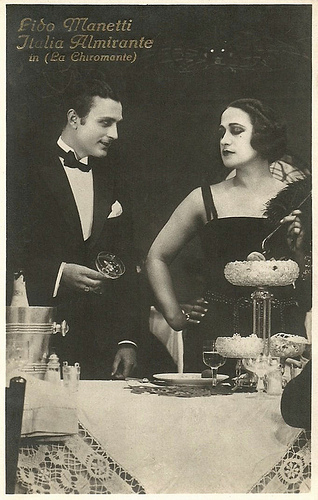
Italian postcard by G.B. Falci, Milano. Photo: Fert. Italia Almirante Manzini and Lido Manetti in La chiromante/The Fortune Teller (Mario Almirante 1921).

Italian postcard, no. 03. Photo: Fert. Publicity still for La chiromante (Mario Almirante, 1922). Caption: The Spiders Room.
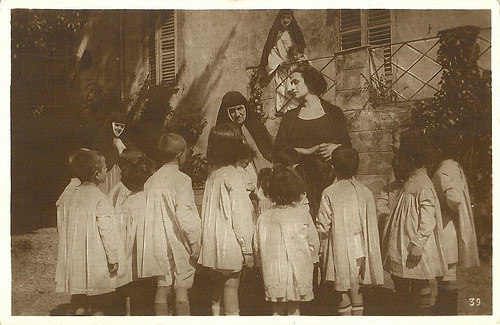
Italian postcard, no. 29. Photo: Fert. Publicity still for La chiromante (Mario Almirante, 1922) with Italia Almirante Manzini . Caption: The good lady.
Catching men just to destroy them
In La chiromante/The Fortune Teller aka La maschera del male (1922), Italia Almirante Manzini plays Lucretia. When she was young, Lucretia was raped by her her stepfather (Franz Sala).
As an adult, Lucretia decides to take revenge by being implacable to all men. Becoming 'Countess Turchina', owner of a gambling house, she catches the men just to destroy them. First she destroys them economically and subsequently, with the art of her fatal seduction, she reduces them to slaves.
But when Lucretia meets the young Santino ( Lido Manetti ) she falls in love with him and saves him the fate of all the other men. Lucretia withdraws out of repentance to a kindergarten to assist abandoned children.
La chiromante was well received in the Italian press. The script was written by future film director Amleto Palermi, and the photography was by Ubaldo Arata.
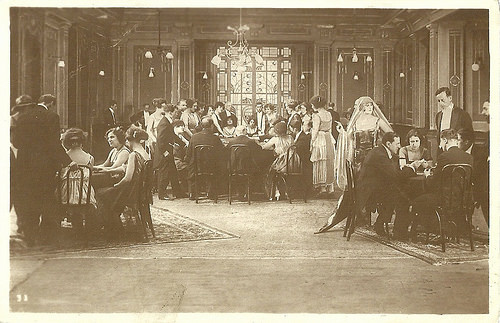
Italian postcard, no. 34. Photo: Fert. Publicity still for La chiromante (Mario Almirante, 1922). Caption: The gambling room.
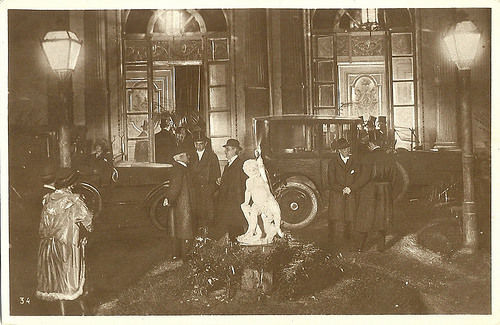
Italian postcard, no. 34. Photo: Fert. Publicity still for La chiromante (Mario Almirante, 1922). Caption: Restaurant chicot (little stump).
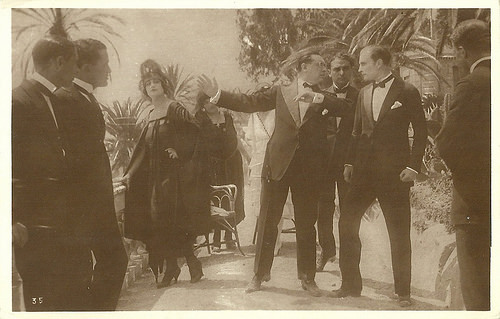
Italian postcard, no. 35. Photo: Fert. Publicity still for La chiromante (Mario Almirante, 1922), with Italia Almirante Manzini , Oreste Bilancia and Lido Manetti . Caption: You fool, if you stay with her, you'll be worthy of her!
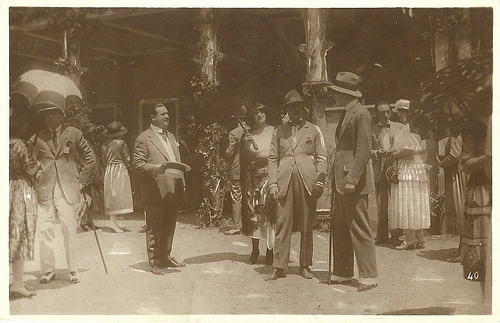
Italian postcard, no. 40. Photo: Fert. Publicity still for La chiromante (Mario Almirante, 1922). Caption: At the horse races, meeting of the countess Turchina and the three inseparable friends.
Source: Wikipedia (Italian) and IMDb.

Italian postcard by G.B. Falci, Milano. Photo: Fert. Italia Almirante Manzini and Lido Manetti in La chiromante/The Fortune Teller (Mario Almirante 1921).

Italian postcard, no. 03. Photo: Fert. Publicity still for La chiromante (Mario Almirante, 1922). Caption: The Spiders Room.

Italian postcard, no. 29. Photo: Fert. Publicity still for La chiromante (Mario Almirante, 1922) with Italia Almirante Manzini . Caption: The good lady.
Catching men just to destroy them
In La chiromante/The Fortune Teller aka La maschera del male (1922), Italia Almirante Manzini plays Lucretia. When she was young, Lucretia was raped by her her stepfather (Franz Sala).
As an adult, Lucretia decides to take revenge by being implacable to all men. Becoming 'Countess Turchina', owner of a gambling house, she catches the men just to destroy them. First she destroys them economically and subsequently, with the art of her fatal seduction, she reduces them to slaves.
But when Lucretia meets the young Santino ( Lido Manetti ) she falls in love with him and saves him the fate of all the other men. Lucretia withdraws out of repentance to a kindergarten to assist abandoned children.
La chiromante was well received in the Italian press. The script was written by future film director Amleto Palermi, and the photography was by Ubaldo Arata.

Italian postcard, no. 34. Photo: Fert. Publicity still for La chiromante (Mario Almirante, 1922). Caption: The gambling room.

Italian postcard, no. 34. Photo: Fert. Publicity still for La chiromante (Mario Almirante, 1922). Caption: Restaurant chicot (little stump).

Italian postcard, no. 35. Photo: Fert. Publicity still for La chiromante (Mario Almirante, 1922), with Italia Almirante Manzini , Oreste Bilancia and Lido Manetti . Caption: You fool, if you stay with her, you'll be worthy of her!

Italian postcard, no. 40. Photo: Fert. Publicity still for La chiromante (Mario Almirante, 1922). Caption: At the horse races, meeting of the countess Turchina and the three inseparable friends.
Source: Wikipedia (Italian) and IMDb.
Published on January 03, 2017 22:00
January 2, 2017
Polaire
French singer and actress Polaire (1874-1939) had a career in the entertainment industry which stretched from the early 1890s to the mid-1930s. She encompassed the range from music-hall singer to stage and film actress. Her most successful period professionally was from the mid-1890s to the beginning of the First World War.
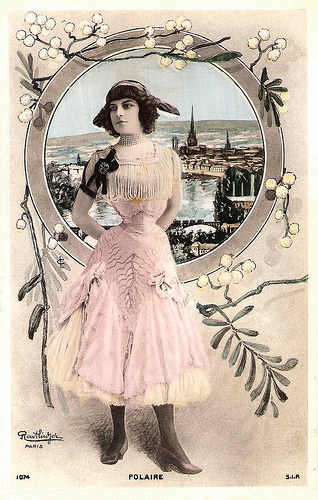
French postcard by S.I.P. , Paris, no. 1074. Photo: Reutlinger, Paris.
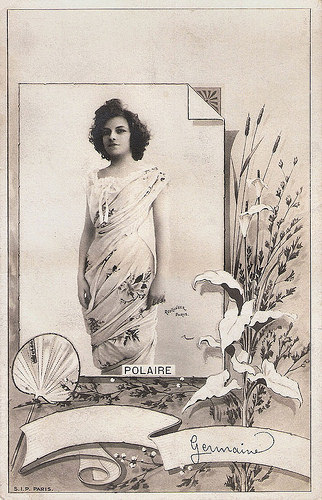
French postcard by S.I.P. , Paris. Sent by mail in 1904. Photo: Reutlinger, Paris.
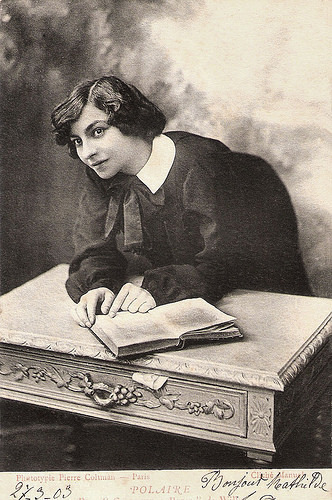
French postcard by Phototypie Pierre Coltman, Paris. Photo: Manuel. Publicity still for the play Claudine à Paris by Willy. Sent by mail in 1903.
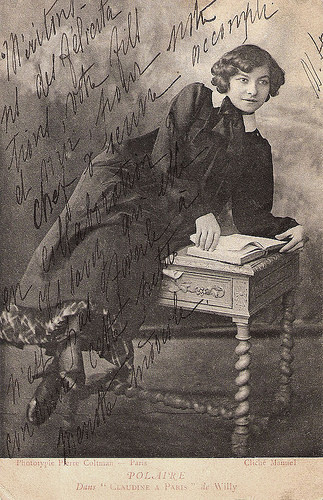
French postcard by Phototypie Pierre Coltman, Paris. Photo: Manuel. Publicity still for the stage production Claudine à Paris by Willy.
Tha ma ra boum di hé
Polaire was born Émilie Marie Bouchaud in Agha, Algeria, in 1874. According to her memoirs she was one of eleven children of whom only four survived – and eventually only two, Émilie and her brother Edmond. When her father died of typhoid, her mother temporarily placed the children under the care of Polaire’s grandmother in Algiers.
In 1891, at the age of 17 she came to Paris to join her brother Edmond who performed there in the café-concerts under the name of Dufleuve. She had already sung in cafes in Algiers and continued on this path, eventually becoming a popular music-hall singer and dancer.
She performed the French version of Ta-ra-ra Boom-de-ay: Tha ma ra boum di hé. It would be her greatest success, already from the start. She became a big name and was portrayed by Henri de Toulouse-Lautrec in the magazine Le Rire in 1895.
Not only her singing and dancing qualities were remarkable, Polaire also distinguished herself by her particular physique, having an exceptional wasp waist, at a time when women tortured themselves with tight corsets to refine their waist.
After a first failed attempt to conquer New York as a singer, Polaire returned to Paris where she expanded her range with prose theatre as well. She managed to get the role of Claudine in Colette’s play Claudine à Paris, which she performed at the Bouffes-Parisiens in 1902. She again performed the play in the US in 1910. This time she was a big hit in the US and came back loaded with money.
Obtaining the part of Claudine was not so easy, Polaire writes in her memoirs. Colette's husband, Willy, at the time reclaimed the rights of Colette’s novels, and didn’t consider this music-hall singer fit for this serious part. But a dashing and headstrong Polaire managed to convince Willy in person that she was Claudine, so she got the part.
Claudine à Paris was performed some 120 times in France, with great success. Colette herself was very satisfied about the result. Willy even managed to exploit the success by a whole line of merchandising. Afterwards Polaire would consider him her substitute father.
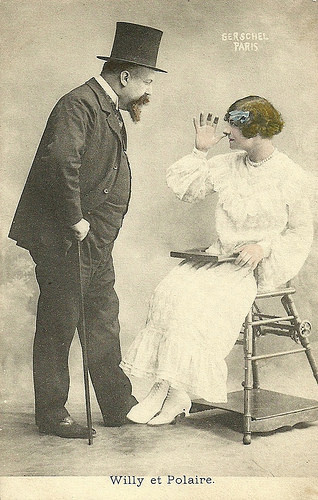
French postcard. Photo Gerschel, Paris. Polaire and Willy.
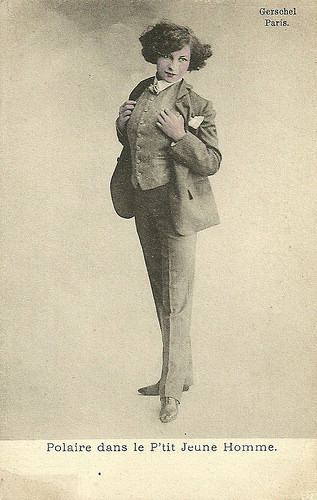
French postcard. Photo: Gerschel, Paris. Polaire in Le P'tit Jeune Homme. Polaire played this travesty role in 1903 at the Bouffes-Parisiens.
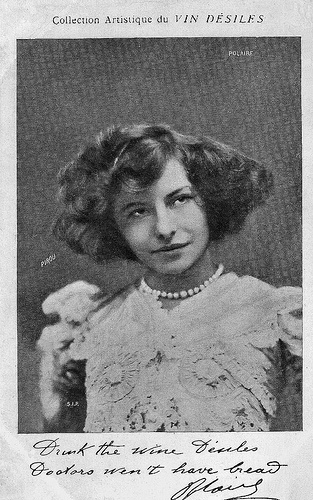
French promotion card by S.I.P. for Vin Désiles. Photo: Pirou. Caption: Drink the wine Désiles. Doctors won't have bread. Polaire.
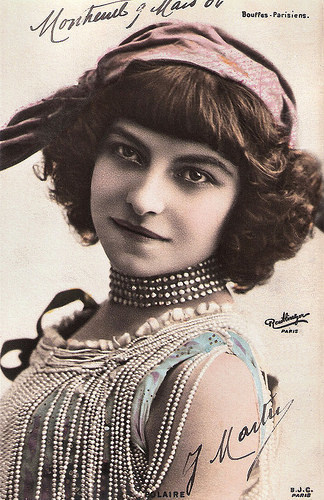
French postcard by B.J.C., Paris. Photo: Reutlinger, Paris. Bouffes-Parisiens.
A poor trapeze worker
From 1909, Polaire appeared in several film roles. She made two films at Pathé frères, Moines et guerriers/Nuns and warriors (Julien Clément, 1909) and La tournée des grand-ducs/The Grandduke’s Tour (Léonce Perret 1910), in which she aptly played a dancer.
She went to Germany to play a Cuban lady in Zouza (Reinhard Bruck, 1911), in which future film director Richard Oswald was one of her co-stars.
Back in France she acted again at Pathé in Le visiteur/The Visitor (Albert Capellani, René Leprince, 1911), but she mostly was active at the Éclair film company between 1911 and 1914, starting with Le poison de l’humanité/The Poison of Humanity (Émile Chautard, Victorin Jasset, 1911).
From 1912 to 1914 she did a series of six films with then young and upcoming film director Maurice Tourneur, working for Éclair: Les gaîtés de l'escadron/The Funny Regiment (1913), based on the novel by Georges Courteline; Le dernier pardon (1913), a comedy written by Gyp; La dame de Monsoreau (1913), after Alexandre Dumas père; Le Friquet (1914), with Polaire in the title role; Soeurette/The Sparrow (1914); and the mystery film Monsieur Lecoq (1914), after Émile Gaboriau. Her co-stars in these films were often Maurice de Féraudy , Charles Krauss, Henry Roussel and Renée Sylvaire .
Le Friquet was restored by the Cinémathèque française in the mid-1990s and was shown at international festivals. It deals with a poor trapeze worker who loses her lover to a rich, immoral lady and then commits suicide during her trapeze act. It was based on a play Polaire had performed herself in 1904.
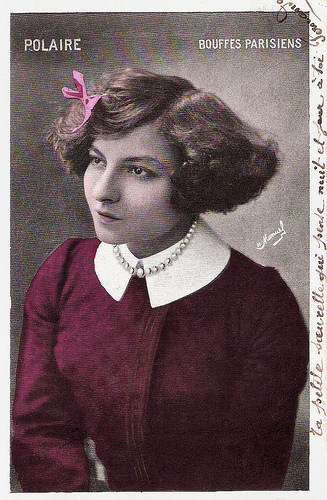
French postcard. Photo: H. Manuel. Publicity still for the stage play Claudine à Paris (1902) at the Théâtre des Bouffes Parisiens. Sent by mail in 1906.
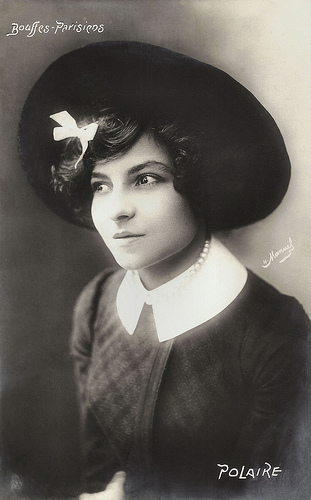
French postcard by EM. Photo: H. Manuel. Publicity still for the stage play Claudine à Paris (1902) at the Théâtre des Bouffes Parisiens.
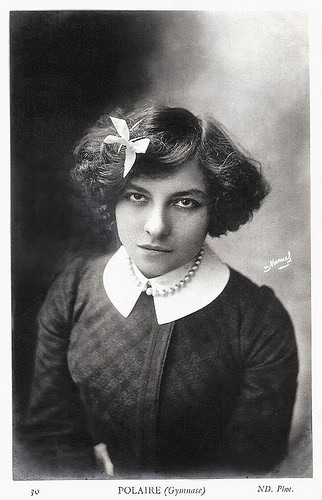
French postcard by ND Phot., no. 30 Photo: H. Manuel. Caption: Polaire (Gymnase).
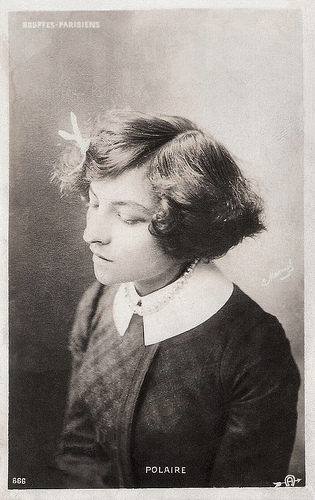
French postcard, no. 666. Photo: H. Manuel. Publicity still for the stage play Claudine à Paris (1902) at the Théâtre des Bouffes Parisiens. Sent by mail in 1908.
The thinnest waist of 33 cm
After World War I, Polaire dedicated herself primarily to the stage. During her career, she recorderd many of her songs as Tha ma ra boum di hé, La Glu - based on a poem by Jean Richepin, Tchique tchique by Vincent Scotto, the telephone song Allo! Chéri!, song with her partner Marjal, and she recited Charlotte prays to Our Lady by Jehan Rictus.
"Mademoiselle Polaire" is cited by the Guinness Book of Records as co-holder, with the British Ethel Granger, of the thinnest waist of 33 cm. She herself says in her memoirs to have repeatedly circled her waist by a fake collar of the 'normal size' of 41 or 42 cm.
Polaire had become a wealthy lady with a house on the Champs-Elysées and a country house in the Var, Villa Claudine. Well into the 1920s she continued to gamble away huge fortunes.
She posed for various painters such as Antonio de La Gandara, Henri de Toulouse-Lautrec, Leonetto Cappiello, Rupert Carabin and John / Juan Sala. Sala became in 1893 the portraitist of Parisian society. His life-sized portrait of Polaire (1910) was auctioned at Drouot's in Paris on 28 June 2016.
Polaire died in 1939 at the age of 65 in Champigny-sur-Marne in the Val-de-Marne.
NB. Sources like IMDb mix up Polaire with Italian actress Pauline Polaire. Pauline Polaire (1904-1986) was a younger actress who was active in the 1920s in several Italian Forzuti films around strongmen characters like Maciste and Saetta. Her real name was Giulietta Gozzi and she was a niece of the Italian diva Hesperia (Olga Mambelli).
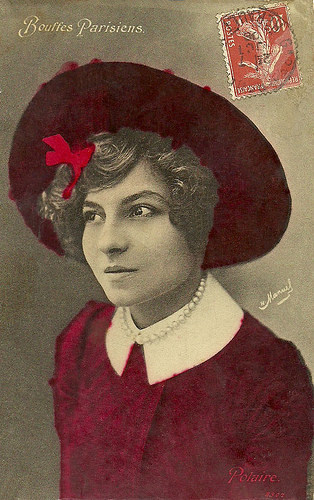
French postcard, no. 8307. Photo: H. Manuel. Publicity still for the stage play Claudine à Paris (1902) at the Théâtre des Bouffes Parisiens. Collection: Didier Hanson.
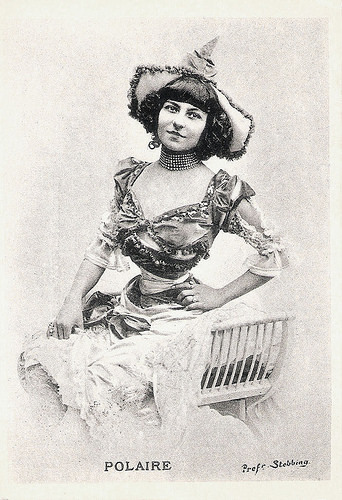
French postcard. Photo: Stebbing.
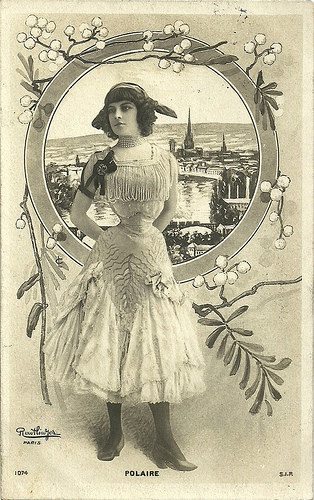
French postcard by S.I.R., no. 1074. Photo: Reutlinger, Paris.
Polaire sings Tchique Tchique (1923). Source: Luna Fae (YouTube).
Sources: Polaire - Un Etoile de la Belle Epoque (French), Du temps des cerises aux feuilles mortes (French), Wikipedia (English, French and Dutch), and .

French postcard by S.I.P. , Paris, no. 1074. Photo: Reutlinger, Paris.

French postcard by S.I.P. , Paris. Sent by mail in 1904. Photo: Reutlinger, Paris.

French postcard by Phototypie Pierre Coltman, Paris. Photo: Manuel. Publicity still for the play Claudine à Paris by Willy. Sent by mail in 1903.

French postcard by Phototypie Pierre Coltman, Paris. Photo: Manuel. Publicity still for the stage production Claudine à Paris by Willy.
Tha ma ra boum di hé
Polaire was born Émilie Marie Bouchaud in Agha, Algeria, in 1874. According to her memoirs she was one of eleven children of whom only four survived – and eventually only two, Émilie and her brother Edmond. When her father died of typhoid, her mother temporarily placed the children under the care of Polaire’s grandmother in Algiers.
In 1891, at the age of 17 she came to Paris to join her brother Edmond who performed there in the café-concerts under the name of Dufleuve. She had already sung in cafes in Algiers and continued on this path, eventually becoming a popular music-hall singer and dancer.
She performed the French version of Ta-ra-ra Boom-de-ay: Tha ma ra boum di hé. It would be her greatest success, already from the start. She became a big name and was portrayed by Henri de Toulouse-Lautrec in the magazine Le Rire in 1895.
Not only her singing and dancing qualities were remarkable, Polaire also distinguished herself by her particular physique, having an exceptional wasp waist, at a time when women tortured themselves with tight corsets to refine their waist.
After a first failed attempt to conquer New York as a singer, Polaire returned to Paris where she expanded her range with prose theatre as well. She managed to get the role of Claudine in Colette’s play Claudine à Paris, which she performed at the Bouffes-Parisiens in 1902. She again performed the play in the US in 1910. This time she was a big hit in the US and came back loaded with money.
Obtaining the part of Claudine was not so easy, Polaire writes in her memoirs. Colette's husband, Willy, at the time reclaimed the rights of Colette’s novels, and didn’t consider this music-hall singer fit for this serious part. But a dashing and headstrong Polaire managed to convince Willy in person that she was Claudine, so she got the part.
Claudine à Paris was performed some 120 times in France, with great success. Colette herself was very satisfied about the result. Willy even managed to exploit the success by a whole line of merchandising. Afterwards Polaire would consider him her substitute father.

French postcard. Photo Gerschel, Paris. Polaire and Willy.

French postcard. Photo: Gerschel, Paris. Polaire in Le P'tit Jeune Homme. Polaire played this travesty role in 1903 at the Bouffes-Parisiens.

French promotion card by S.I.P. for Vin Désiles. Photo: Pirou. Caption: Drink the wine Désiles. Doctors won't have bread. Polaire.

French postcard by B.J.C., Paris. Photo: Reutlinger, Paris. Bouffes-Parisiens.
A poor trapeze worker
From 1909, Polaire appeared in several film roles. She made two films at Pathé frères, Moines et guerriers/Nuns and warriors (Julien Clément, 1909) and La tournée des grand-ducs/The Grandduke’s Tour (Léonce Perret 1910), in which she aptly played a dancer.
She went to Germany to play a Cuban lady in Zouza (Reinhard Bruck, 1911), in which future film director Richard Oswald was one of her co-stars.
Back in France she acted again at Pathé in Le visiteur/The Visitor (Albert Capellani, René Leprince, 1911), but she mostly was active at the Éclair film company between 1911 and 1914, starting with Le poison de l’humanité/The Poison of Humanity (Émile Chautard, Victorin Jasset, 1911).
From 1912 to 1914 she did a series of six films with then young and upcoming film director Maurice Tourneur, working for Éclair: Les gaîtés de l'escadron/The Funny Regiment (1913), based on the novel by Georges Courteline; Le dernier pardon (1913), a comedy written by Gyp; La dame de Monsoreau (1913), after Alexandre Dumas père; Le Friquet (1914), with Polaire in the title role; Soeurette/The Sparrow (1914); and the mystery film Monsieur Lecoq (1914), after Émile Gaboriau. Her co-stars in these films were often Maurice de Féraudy , Charles Krauss, Henry Roussel and Renée Sylvaire .
Le Friquet was restored by the Cinémathèque française in the mid-1990s and was shown at international festivals. It deals with a poor trapeze worker who loses her lover to a rich, immoral lady and then commits suicide during her trapeze act. It was based on a play Polaire had performed herself in 1904.

French postcard. Photo: H. Manuel. Publicity still for the stage play Claudine à Paris (1902) at the Théâtre des Bouffes Parisiens. Sent by mail in 1906.

French postcard by EM. Photo: H. Manuel. Publicity still for the stage play Claudine à Paris (1902) at the Théâtre des Bouffes Parisiens.

French postcard by ND Phot., no. 30 Photo: H. Manuel. Caption: Polaire (Gymnase).

French postcard, no. 666. Photo: H. Manuel. Publicity still for the stage play Claudine à Paris (1902) at the Théâtre des Bouffes Parisiens. Sent by mail in 1908.
The thinnest waist of 33 cm
After World War I, Polaire dedicated herself primarily to the stage. During her career, she recorderd many of her songs as Tha ma ra boum di hé, La Glu - based on a poem by Jean Richepin, Tchique tchique by Vincent Scotto, the telephone song Allo! Chéri!, song with her partner Marjal, and she recited Charlotte prays to Our Lady by Jehan Rictus.
"Mademoiselle Polaire" is cited by the Guinness Book of Records as co-holder, with the British Ethel Granger, of the thinnest waist of 33 cm. She herself says in her memoirs to have repeatedly circled her waist by a fake collar of the 'normal size' of 41 or 42 cm.
Polaire had become a wealthy lady with a house on the Champs-Elysées and a country house in the Var, Villa Claudine. Well into the 1920s she continued to gamble away huge fortunes.
She posed for various painters such as Antonio de La Gandara, Henri de Toulouse-Lautrec, Leonetto Cappiello, Rupert Carabin and John / Juan Sala. Sala became in 1893 the portraitist of Parisian society. His life-sized portrait of Polaire (1910) was auctioned at Drouot's in Paris on 28 June 2016.
Polaire died in 1939 at the age of 65 in Champigny-sur-Marne in the Val-de-Marne.
NB. Sources like IMDb mix up Polaire with Italian actress Pauline Polaire. Pauline Polaire (1904-1986) was a younger actress who was active in the 1920s in several Italian Forzuti films around strongmen characters like Maciste and Saetta. Her real name was Giulietta Gozzi and she was a niece of the Italian diva Hesperia (Olga Mambelli).

French postcard, no. 8307. Photo: H. Manuel. Publicity still for the stage play Claudine à Paris (1902) at the Théâtre des Bouffes Parisiens. Collection: Didier Hanson.

French postcard. Photo: Stebbing.

French postcard by S.I.R., no. 1074. Photo: Reutlinger, Paris.
Polaire sings Tchique Tchique (1923). Source: Luna Fae (YouTube).
Sources: Polaire - Un Etoile de la Belle Epoque (French), Du temps des cerises aux feuilles mortes (French), Wikipedia (English, French and Dutch), and .
Published on January 02, 2017 22:00
January 1, 2017
Exported to the USA: Corinne Calvet
Alluring French leading lady Corinne Calvet (1925-2001) made a big splash in Hollywood in the early 1950s with her sultry looks and her highly publicised legal battles.
 >
>
Dutch postcard by Takken, Utrecht, no. AX 309. Photo: Paramount.
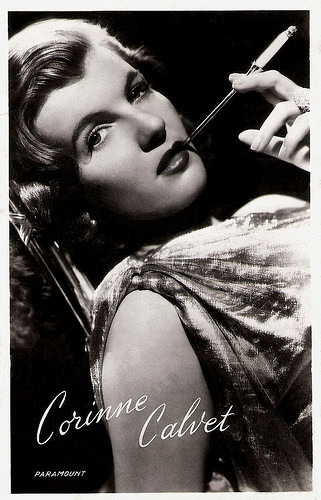
Dutch postcard, no. AX 319. Photo: Paramount.
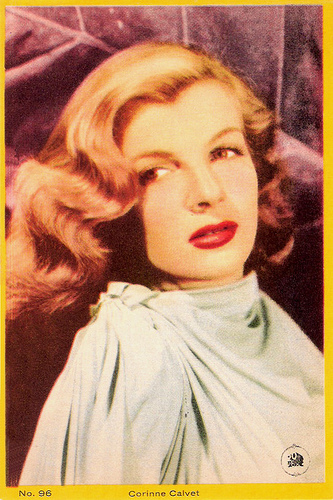
Mexican collectors card, no. 96. Photo: 20th Century Fox.
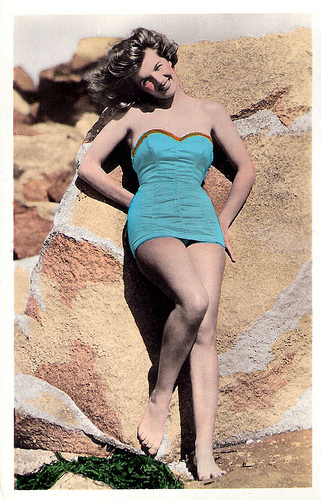
French postcard by Editions P.I., Paris, no. 604. Photo: Paramount, 1951.
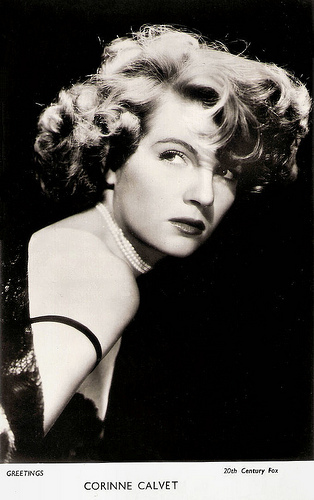
British Greetings postcard. Photo: 20th Century Fox.
Curvaceous
Corinne Calvet was born as Corinne Dibos in Paris in 1925. Her mother was one of the scientists who contributed to the invention of Pyrex, a glassware that enabled food to be cooked directly in the glass in an oven.
At the age of 12 Corinne appeared in a short film about billiards called Super Cue Men. She decided to become an actress while studying law at the Sorbonne. She went to study at L'Ecole du Cinema and after WW II she appeared in French radio and stage productions.
She made her feature film début with a small role in La part de l'ombre/Blind Desire (Jean Delannoy, 1945) starring Jean-Louis Barrault . Soon followed bigger roles in Pétrus (Marc Allégret, 1846) with Fernandel , Nous ne sommes pas mariés/We Are Not Married (Bernard-Roland, Gianni Pons, 1946) and Le château de la dernière chance/The Castle of the Last Chance (Jean-Paul Paulin, 1947).
She was discovered in 1947 by Paramount producer Hal Wallis, who invited her to come to Hollywood. He cast the French beauty in the Casablanca derivation Rope of Sand (William Dieterle, 1949). As the only woman in a cast that included Burt Lancaster , Paul Henreid, Peter Lorre and Claude Rains , the curvaceous 23-year-old Calvet could not help but be noticed. Also in the cast was handsome 27-year-old John Bromfield, whom she soon married.
Next followed a role in the comedy My Friend Irma Goes West (Hal Walker, 1950), opposite Dean Martin and Jerry Lewis, with whom she later also appeared in Sailor Beware (Hal Walker, 1952).
Calvet's few films made for Darryl F. Zanuck at 20th Century-Fox were somewhat better, two of them under John Ford, though they were among the director's weakest works: When Willie Comes Marching Home (1950), in which she played a French underground leader who woos soldier Dan Dailey, and as a vivacious barmaid fought over by soldiers Dailey and James Cagney in What Price Glory? (1952). Also at Fox, Calvet was a spirited partner of Danny Kaye in a nightclub act in On The Riviera (Walter Lang, 1951).
In 1952 Calvet filed a million-dollar slander lawsuit to actress Zsa Zsa Gabor for telling several people, including a newspaper columnist, that Calvet was not really French. Later that year this came out to be not a genuine feud but just another publicity stunt.
The following years Calvet appeared in a string of films, usually playing French characters, opposite such leading men as Alan Ladd in Thunder In The East (Charles Vidor, 1952), James Stewart in the excellent western The Far Country (Anthony Mann, 1954), and Tony Curtis in So This Is Paris (Richard Quine, 1955).
She also continued to act in Italian and French productions, like the thriller Bonnes à tuer/One Step to Eternity (Henri Decoin, 1954), Le ragazze di San Frediano/The Girls of San Frediano (Valerio Zurlini, 1955), and Le Avventure Di Giacomo Casanova/Sins of Casanova (Steno, 1955) opposite Gabriele Ferzetti .
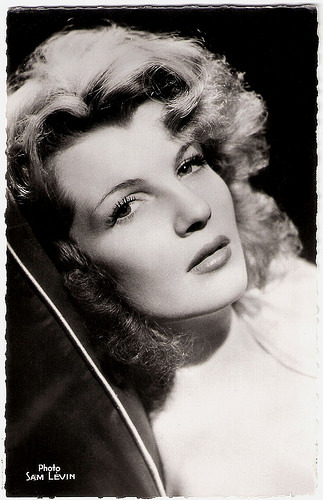
French postcard by Editions du Globe, Paris, no. 319. Photo: Sam Lévin.
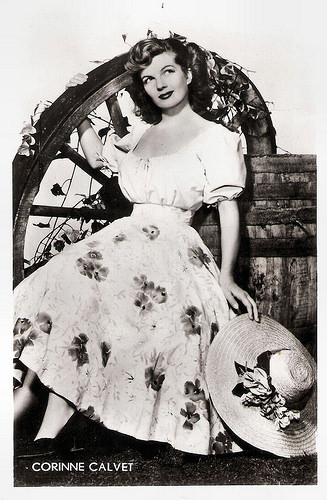
Dutch postcard by J. Sleding, Amsterdam, no. 38.
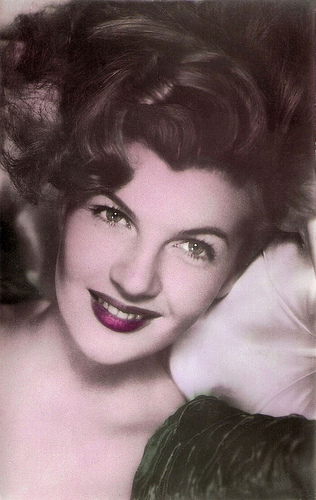
Yugoslavian postcard by Studio Sombor, no. 192.
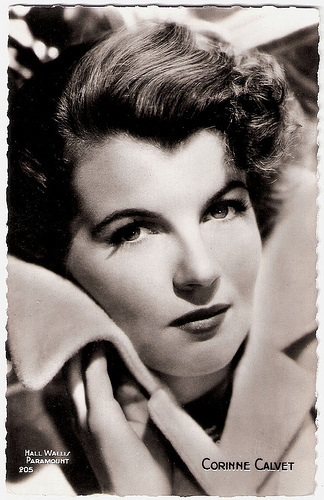
French postcard by Editions P.I., Paris, no. 639, offered by S.A. Victoria, Brussels. Photo: Paramount Pictures, 1950.
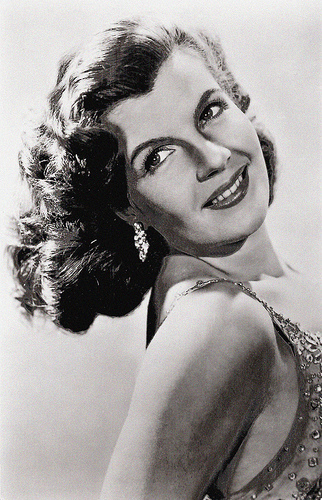
British postcard. Photo: 20th Century Fox.
Has Corinne Been a Good Girl?
In 1955, Corinne Calvet married actor/writer Jeffrey Stone and cooled her acting career. The couple had a son, Robin. Between her marriages and liaisons she made sporadic appearances on American television series and in such films as the British suspense film Bluebeard's Ten Honeymoons (W. Lee Wilder, 1960) with George Sanders, Hemingway's Adventures of a Young Man (Martin Ritt, 1962) and Apache Uprising (R.G. Springsteen, 1966).
In the 1970s she started a career as a psycho-therapist. On the screen she appeared in such fare as the TV film The Phantom of Hollywood (Gene Levitt, 1974) and the soft-core porn film Too Hot to Handle (Don Schain, 1976). In the 1980s, Calvet played a victim of Oliver Reed in Dr Heckle and Mr Hype (Charles B. Griffith, 1980), and had a cameo in The Sword And The Sorcerer (Albert Pyun, 1982).
Calvet was married four times. Her first marriage was to actor John Bromfield (1948-1954), who, she claimed had been ordered to marry her by their studio. She also claimed that "he had an addiction to sex, which he needed to satisfy in order to sleep". Her second marriage was to minor actor/writer Jeffrey Stone (1955-1962). In 1966 she married director Albert C. Gannaway in Las Vegas, with whom she had made the Western Plunderers of Painted Flats (1959), the last film for Republic Pictures. But Gannaway left her just a week after their marriage. In 1967, her longtime boyfriend, millionaire Donald Scott sued her to recover assets that he had placed under her name in order to hide them from his wife in a divorce battle. Saying that Calvet had used voodoo to control him, Scott settled his differences with her after a bitter two-week trial. Calvet's final marriage was to producer/commercial photographer Robert J. Wirt (1968-1971). All marriages ended in divorce.
Calvet once told a reporter that American men make wonderful husbands if you don't love them. But if you love them, she advised, don't marry them. Corinne Calvet died in 2001 in Los Angeles of a cerebral hemorrhage at the age of 76. She is survived by a son of her fourth marriage, Michael.
In her memoir, entitled Has Corinne Been a Good Girl? (1983), she stated that the roles she played for Hollywood studios typecasted her and never challenged her acting ability. And about the title: readers and filmgoers were left to make up their own minds as to the answer.
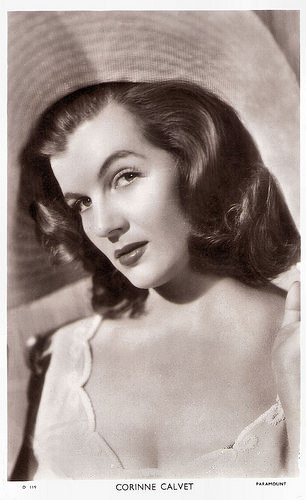
British postcard in the Picturegoer Series, London, no. D 119. Photo: Paramount.
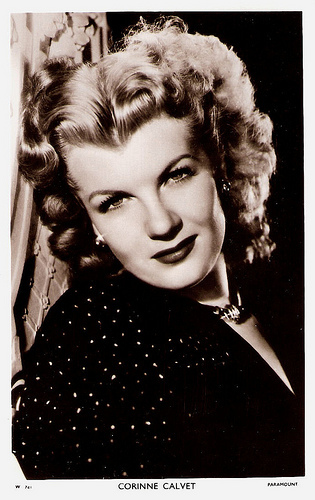
British postcard in the Picturegoer Series, London, no. W. 741. Photo: Paramount.

British postcard in the Celebrity Autograph Series by L.D. LTD., London, no. 172. Photo: Universal-International.
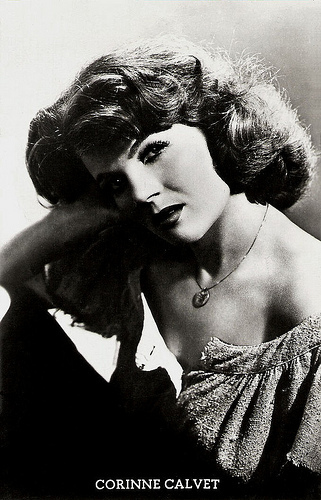
French postcard, no. 850. Photo: 20th Century Fox.
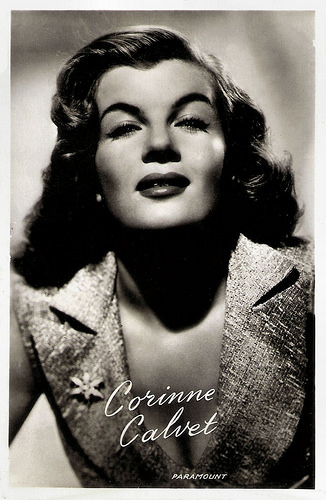
Dutch postcard by Takken, Utrecht, no. 1609. Photo: Paramount.
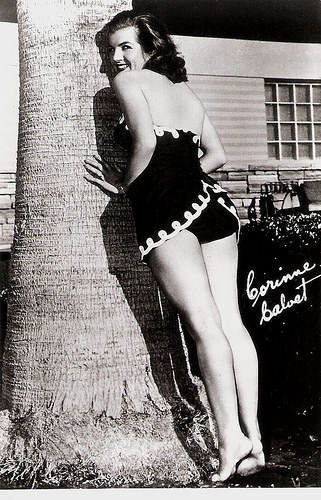
Vintage postcard.
Trailer for My Friend Irma Goes West (1950). Source: Paramountmovies Digital (YouTube).
Sources: Hal Erickson (AllMovie), Brian J. Walker (Brian’s Drive-In Theater), Philippe Garnier (Libération), Jon Thurber (Los Angeles Times), Ronald Bergan (The Guardian), Glamour Girls of the Silver Screen, Wikipedia and .
 >
>Dutch postcard by Takken, Utrecht, no. AX 309. Photo: Paramount.

Dutch postcard, no. AX 319. Photo: Paramount.

Mexican collectors card, no. 96. Photo: 20th Century Fox.

French postcard by Editions P.I., Paris, no. 604. Photo: Paramount, 1951.

British Greetings postcard. Photo: 20th Century Fox.
Curvaceous
Corinne Calvet was born as Corinne Dibos in Paris in 1925. Her mother was one of the scientists who contributed to the invention of Pyrex, a glassware that enabled food to be cooked directly in the glass in an oven.
At the age of 12 Corinne appeared in a short film about billiards called Super Cue Men. She decided to become an actress while studying law at the Sorbonne. She went to study at L'Ecole du Cinema and after WW II she appeared in French radio and stage productions.
She made her feature film début with a small role in La part de l'ombre/Blind Desire (Jean Delannoy, 1945) starring Jean-Louis Barrault . Soon followed bigger roles in Pétrus (Marc Allégret, 1846) with Fernandel , Nous ne sommes pas mariés/We Are Not Married (Bernard-Roland, Gianni Pons, 1946) and Le château de la dernière chance/The Castle of the Last Chance (Jean-Paul Paulin, 1947).
She was discovered in 1947 by Paramount producer Hal Wallis, who invited her to come to Hollywood. He cast the French beauty in the Casablanca derivation Rope of Sand (William Dieterle, 1949). As the only woman in a cast that included Burt Lancaster , Paul Henreid, Peter Lorre and Claude Rains , the curvaceous 23-year-old Calvet could not help but be noticed. Also in the cast was handsome 27-year-old John Bromfield, whom she soon married.
Next followed a role in the comedy My Friend Irma Goes West (Hal Walker, 1950), opposite Dean Martin and Jerry Lewis, with whom she later also appeared in Sailor Beware (Hal Walker, 1952).
Calvet's few films made for Darryl F. Zanuck at 20th Century-Fox were somewhat better, two of them under John Ford, though they were among the director's weakest works: When Willie Comes Marching Home (1950), in which she played a French underground leader who woos soldier Dan Dailey, and as a vivacious barmaid fought over by soldiers Dailey and James Cagney in What Price Glory? (1952). Also at Fox, Calvet was a spirited partner of Danny Kaye in a nightclub act in On The Riviera (Walter Lang, 1951).
In 1952 Calvet filed a million-dollar slander lawsuit to actress Zsa Zsa Gabor for telling several people, including a newspaper columnist, that Calvet was not really French. Later that year this came out to be not a genuine feud but just another publicity stunt.
The following years Calvet appeared in a string of films, usually playing French characters, opposite such leading men as Alan Ladd in Thunder In The East (Charles Vidor, 1952), James Stewart in the excellent western The Far Country (Anthony Mann, 1954), and Tony Curtis in So This Is Paris (Richard Quine, 1955).
She also continued to act in Italian and French productions, like the thriller Bonnes à tuer/One Step to Eternity (Henri Decoin, 1954), Le ragazze di San Frediano/The Girls of San Frediano (Valerio Zurlini, 1955), and Le Avventure Di Giacomo Casanova/Sins of Casanova (Steno, 1955) opposite Gabriele Ferzetti .

French postcard by Editions du Globe, Paris, no. 319. Photo: Sam Lévin.

Dutch postcard by J. Sleding, Amsterdam, no. 38.

Yugoslavian postcard by Studio Sombor, no. 192.

French postcard by Editions P.I., Paris, no. 639, offered by S.A. Victoria, Brussels. Photo: Paramount Pictures, 1950.

British postcard. Photo: 20th Century Fox.
Has Corinne Been a Good Girl?
In 1955, Corinne Calvet married actor/writer Jeffrey Stone and cooled her acting career. The couple had a son, Robin. Between her marriages and liaisons she made sporadic appearances on American television series and in such films as the British suspense film Bluebeard's Ten Honeymoons (W. Lee Wilder, 1960) with George Sanders, Hemingway's Adventures of a Young Man (Martin Ritt, 1962) and Apache Uprising (R.G. Springsteen, 1966).
In the 1970s she started a career as a psycho-therapist. On the screen she appeared in such fare as the TV film The Phantom of Hollywood (Gene Levitt, 1974) and the soft-core porn film Too Hot to Handle (Don Schain, 1976). In the 1980s, Calvet played a victim of Oliver Reed in Dr Heckle and Mr Hype (Charles B. Griffith, 1980), and had a cameo in The Sword And The Sorcerer (Albert Pyun, 1982).
Calvet was married four times. Her first marriage was to actor John Bromfield (1948-1954), who, she claimed had been ordered to marry her by their studio. She also claimed that "he had an addiction to sex, which he needed to satisfy in order to sleep". Her second marriage was to minor actor/writer Jeffrey Stone (1955-1962). In 1966 she married director Albert C. Gannaway in Las Vegas, with whom she had made the Western Plunderers of Painted Flats (1959), the last film for Republic Pictures. But Gannaway left her just a week after their marriage. In 1967, her longtime boyfriend, millionaire Donald Scott sued her to recover assets that he had placed under her name in order to hide them from his wife in a divorce battle. Saying that Calvet had used voodoo to control him, Scott settled his differences with her after a bitter two-week trial. Calvet's final marriage was to producer/commercial photographer Robert J. Wirt (1968-1971). All marriages ended in divorce.
Calvet once told a reporter that American men make wonderful husbands if you don't love them. But if you love them, she advised, don't marry them. Corinne Calvet died in 2001 in Los Angeles of a cerebral hemorrhage at the age of 76. She is survived by a son of her fourth marriage, Michael.
In her memoir, entitled Has Corinne Been a Good Girl? (1983), she stated that the roles she played for Hollywood studios typecasted her and never challenged her acting ability. And about the title: readers and filmgoers were left to make up their own minds as to the answer.

British postcard in the Picturegoer Series, London, no. D 119. Photo: Paramount.

British postcard in the Picturegoer Series, London, no. W. 741. Photo: Paramount.

British postcard in the Celebrity Autograph Series by L.D. LTD., London, no. 172. Photo: Universal-International.

French postcard, no. 850. Photo: 20th Century Fox.

Dutch postcard by Takken, Utrecht, no. 1609. Photo: Paramount.

Vintage postcard.
Trailer for My Friend Irma Goes West (1950). Source: Paramountmovies Digital (YouTube).
Sources: Hal Erickson (AllMovie), Brian J. Walker (Brian’s Drive-In Theater), Philippe Garnier (Libération), Jon Thurber (Los Angeles Times), Ronald Bergan (The Guardian), Glamour Girls of the Silver Screen, Wikipedia and .
Published on January 01, 2017 22:00
December 31, 2016
Mirror, mirror
Goodbye 2016, Hello 2017! EFSP starts the New Year with a guest post. Film historian Ivo Blom chose for this New Year's post 12 postcards from his collection which feature mirrors. Ivo: "Mirror, mirror on the wall... Already in Antiquity mirrors had a connotation of magic, a tradition which has maintained – just think of Snow White or Harry Potter’s Mirror of Erised. The use of real mirrors in film has also become an established feature of film language. It developed in the 1910s as a typical European phenomenon in silent cinema, which set cinema apart from theatre."
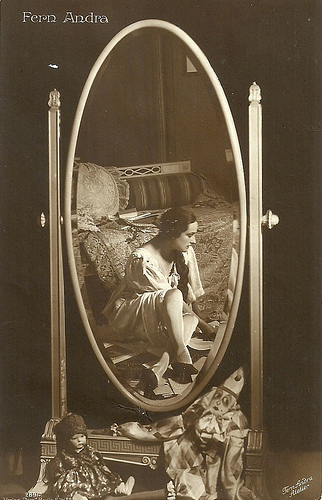
German postcard by Ross Verlag, no. 289/2, 1919-1924. Photo: Fern Andra Atelier.
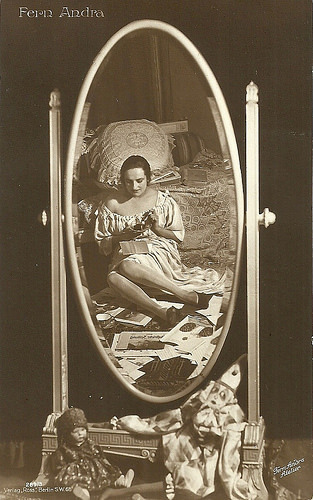
German postcard by Ross Verlag, no. 289/3, 1919-1924. Photo: Fern Andra Atelier.
'Modern' American actress Fern Andra (1893-1974) became one of the most popular film stars of the German cinema in the 1910s and early 1920s. In her films she mastered tightroping, riding horse without a saddle, driving cars and motorcycles, bobsleighing, and even boxing.
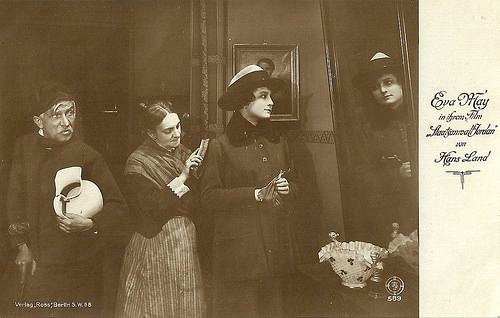
German postcard by Ross Verlag, no. 589, 1919-1924. Photo: Ring-Film. Eva May in Staatsanwalt Jordan (Erik Lund, 1919). The man on the left is Hermann Picha, May is the lady watching herself in the mirror.
Eva May (1902-1924) was the daughter of film star Mia May and producer Joe May. It was only natural that she would follow suit. She became ‘everybody’s darling’ but in 1924 she committed suicide.

German postcard by Verlag Hermann Leiser, no. 842. Photo: Imperial-Film.
Grete Lundt aka Grete Lund (1892-1926) was as an Austrian stage and screen actress, who played in Austrian and German silent films. Lundt was befriended with Julius Barmat, the Jewish merchant who would be the centre of the Barmat Scandal, which discredited the SDP because of the exposure of wide-spread corruption. It also raised anti-Semitism, and helped the right wing to win the 1925 elections. Lundt’s career went down by lack of work and money, aggravated by a morphine addiction. In order to pay for the costs of a morphine addicts clinic, she had to sell her house and all her belongings. On New Year’s Eve 1926, a desperate Lundt committed suicide in the Vienna-Berlin D-train, using an overdose of morphine. Grete Lundt died 60 years ago.
To create suspense and voyeurism
Mirrors were used for visual dialogues between off-screen and onscreen characters and for the creation of suspense and voyeurism. It then developed both in mainstream and avant-garde cinema, in particular in German cinema of the 1920s and early 1930s, and subsequently in classical Hollywood cinema.
It is part of a wish to prefer a more synthetic approach in cinema, by use of deep staging and lengthy shots over analytical editing in which acting is cut up over several shots. It is also part of a wish to suggest that the world of cinema does not stop at the borders of its frame, involving the off-screen space and off-screen characters.
Of course mirrors may be explained in film sets as natural ingredients, even if in constructed interiors. People will dress themselves in front of mirrors, check their face and clothes, comb their hair, shave, use make up or remove it again. Mirrors also add a dimension to the filmic space, showing parts that otherwise would remain hidden: the fourth wall.
But mirrors can also be used in a narrative and metaphorical way, such as the introspection, the showing of guilt and desire, passages to other worlds, the calling of the future or ghosts from the past.
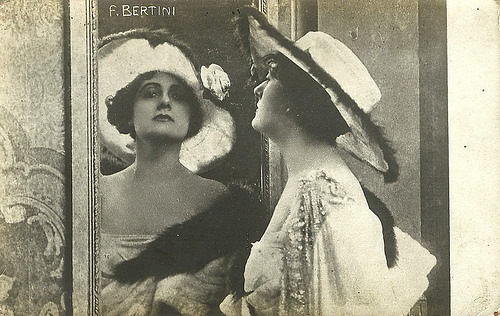
American postcard, monogram K Ltd. Francesca Bertini in Odette (Giuseppe De Liguoro, 1916).
Majestic diva of the Italian silent cinema Francesca Bertini (1892-1985) was one of the first European film stars. During the first quarter of the twentieth century she often played the 'femme fatale', with men devouring eyes, glamorous attire, clenched fists, and in opulent settings, or the suffering 'femme fragile, who is devastated by the adultery of her man.
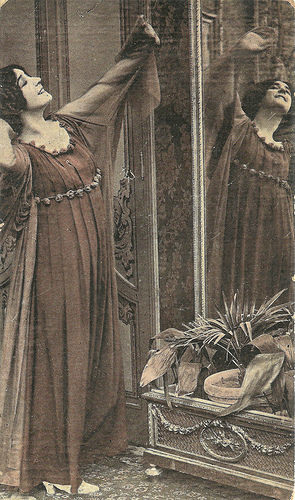
Spanish postcard by Chocolate Salas Sabadell. Leda Gys in Fernanda (Gustavo Serena, 1917), based on Victorien Sardou's play.
Italian film diva Leda Gys (1892-1957) starred in ca. 60 dramas, comedies, action thrillers and even westerns of the Italian and Spanish silent cinema. Her claim to fame came with the film Christus (1916), shot in Egypt and Palestine, where Gys performed the Madonna.
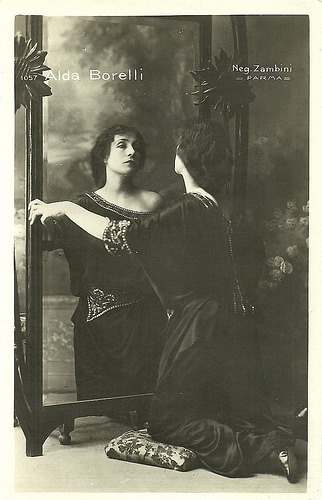
Italian postcard by Ed. G. Vettori, Bologna. Photo: Zambini, Parma.
Alda Borelli (1879-1964) was an Italian stage and screen actress, who peaked on stage in the 1920s, and also acted in a handful of silent films in the 1910s. She was the sister of Italian film diva Lyda Borelli.
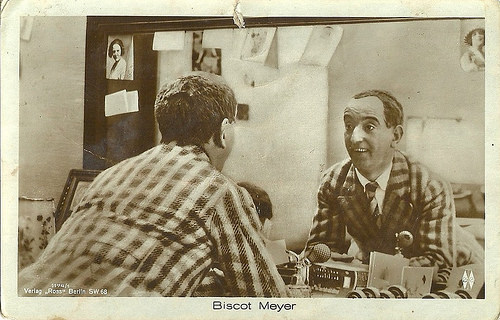
German postcard by Ross Verlag, no. 1174/1, 1927-1928. Georges Biscot aka Biscot Meyer.
Georges Biscot (1886-1945) was a popular French music-hall and revue singer and actor, who also knew a career in French silent and sound film.
The Venus Effect
In postcards with stars of the silent cinema we mostly encounter the joy of mirroring oneself, as in the postcards with the Italian divas like Francesca Bertini and Leda Gys enjoying their own beauty.
It happens though often with a twist, the so-called Venus-effect, after Diego Velazquez’ portrait called Rokeby Venus. In order to get a perfect reflection of the portrayed person, the mirror is placed obliquely, showing us the reflection of the person at its best. Instead, the person is likely not to see himself or herself but rather the camera, so the onlooker. Also the mirror is often tilted, to avoid the reflection of the camera.
In the 1920s the French magazine Comoedia released a series of hundreds of postcards of French actors of the stage, called Nos artistes dans leur loges (Our artists in their dressing-rooms). We notice the actors and often also their reflections in the set-up of their dressing-rooms.
The artists are dressed in theatre costumes that often refer to famous plays they were in, and photos attached to the mirrors confirm this. Still, many of these actors had also rich careers in French cinema as well, such as here Maxime Desjardins and Jane Rollette.
One of my favourites is the young Renée Simonot, who did not act in film but was a famous voice actor in France and at the age of 105 is still alive. You may not recall her right away but she is the mother of Catherine Deneuve .
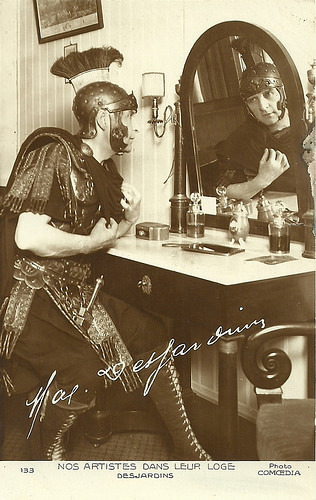
French postcard in the Nos artistes dans leur loge series, no. 133. Photo: Comoedia.
Maxime Desjardins (18961-1936) was a French stage and screen actor, who peaked in the French silent cinema of the 1920s. From 1912 Desjardins acted in cinema, first in short films at Pathé Frères and at Eclair, later in films by acclaimed directors as Abel Gance, Julien Duvivier and Henri Diamant-Berger.
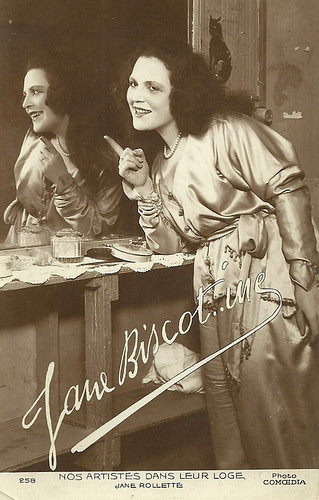
French postcard in the Nos artistes dans leur loge series, no. 258. Photo: Comoedia.
Jane Rollette aka Jeanne Rollette (1891-1994) was a French film actress who peaked in Louis Feuillade's serial films of the late 1910s and early 1920s. In Barrabas (Louis Feuillade, 1919) Georges Biscot played Biscotin, while Rollette played Biscotine.
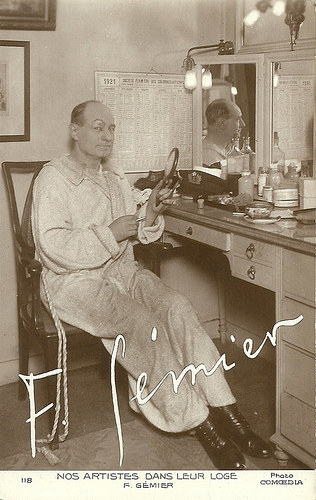
French postcard in the Nos artistes dans leur loge series, no. 118. Photo: Comoedia.
Firmin Gémier (1869-1933) was actor, director and theatre manager at the French stage, promotor of the Théâtre populaire and founder of the first Théâtre national populaire in Paris in 1920. He also acted in French silent and sound cinema of the 1910s to the 1930s.
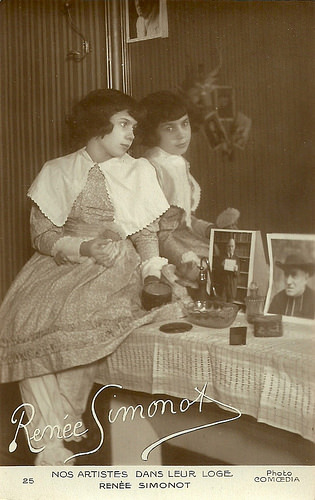
French postcard in the Nos artistes dans leur loge series, no. 25. Photo: Comoedia.
Renée-Jeanne Simonot (born 1911) is a French stage actress. Simonot was one of the first French actresses to begin the dubbing of American films in France from the beginning of the talkies in 1929 through the 1930s. She was married to actor Maurice Dorléac, and is the mother of actresses Catherine Deneuve and Françoise Dorléac , and grandmother of actors Christian Vadim and Chiara Mastroianni.
Ivo, thank you very much!

German postcard by Ross Verlag, no. 289/2, 1919-1924. Photo: Fern Andra Atelier.

German postcard by Ross Verlag, no. 289/3, 1919-1924. Photo: Fern Andra Atelier.
'Modern' American actress Fern Andra (1893-1974) became one of the most popular film stars of the German cinema in the 1910s and early 1920s. In her films she mastered tightroping, riding horse without a saddle, driving cars and motorcycles, bobsleighing, and even boxing.

German postcard by Ross Verlag, no. 589, 1919-1924. Photo: Ring-Film. Eva May in Staatsanwalt Jordan (Erik Lund, 1919). The man on the left is Hermann Picha, May is the lady watching herself in the mirror.
Eva May (1902-1924) was the daughter of film star Mia May and producer Joe May. It was only natural that she would follow suit. She became ‘everybody’s darling’ but in 1924 she committed suicide.

German postcard by Verlag Hermann Leiser, no. 842. Photo: Imperial-Film.
Grete Lundt aka Grete Lund (1892-1926) was as an Austrian stage and screen actress, who played in Austrian and German silent films. Lundt was befriended with Julius Barmat, the Jewish merchant who would be the centre of the Barmat Scandal, which discredited the SDP because of the exposure of wide-spread corruption. It also raised anti-Semitism, and helped the right wing to win the 1925 elections. Lundt’s career went down by lack of work and money, aggravated by a morphine addiction. In order to pay for the costs of a morphine addicts clinic, she had to sell her house and all her belongings. On New Year’s Eve 1926, a desperate Lundt committed suicide in the Vienna-Berlin D-train, using an overdose of morphine. Grete Lundt died 60 years ago.
To create suspense and voyeurism
Mirrors were used for visual dialogues between off-screen and onscreen characters and for the creation of suspense and voyeurism. It then developed both in mainstream and avant-garde cinema, in particular in German cinema of the 1920s and early 1930s, and subsequently in classical Hollywood cinema.
It is part of a wish to prefer a more synthetic approach in cinema, by use of deep staging and lengthy shots over analytical editing in which acting is cut up over several shots. It is also part of a wish to suggest that the world of cinema does not stop at the borders of its frame, involving the off-screen space and off-screen characters.
Of course mirrors may be explained in film sets as natural ingredients, even if in constructed interiors. People will dress themselves in front of mirrors, check their face and clothes, comb their hair, shave, use make up or remove it again. Mirrors also add a dimension to the filmic space, showing parts that otherwise would remain hidden: the fourth wall.
But mirrors can also be used in a narrative and metaphorical way, such as the introspection, the showing of guilt and desire, passages to other worlds, the calling of the future or ghosts from the past.

American postcard, monogram K Ltd. Francesca Bertini in Odette (Giuseppe De Liguoro, 1916).
Majestic diva of the Italian silent cinema Francesca Bertini (1892-1985) was one of the first European film stars. During the first quarter of the twentieth century she often played the 'femme fatale', with men devouring eyes, glamorous attire, clenched fists, and in opulent settings, or the suffering 'femme fragile, who is devastated by the adultery of her man.

Spanish postcard by Chocolate Salas Sabadell. Leda Gys in Fernanda (Gustavo Serena, 1917), based on Victorien Sardou's play.
Italian film diva Leda Gys (1892-1957) starred in ca. 60 dramas, comedies, action thrillers and even westerns of the Italian and Spanish silent cinema. Her claim to fame came with the film Christus (1916), shot in Egypt and Palestine, where Gys performed the Madonna.

Italian postcard by Ed. G. Vettori, Bologna. Photo: Zambini, Parma.
Alda Borelli (1879-1964) was an Italian stage and screen actress, who peaked on stage in the 1920s, and also acted in a handful of silent films in the 1910s. She was the sister of Italian film diva Lyda Borelli.

German postcard by Ross Verlag, no. 1174/1, 1927-1928. Georges Biscot aka Biscot Meyer.
Georges Biscot (1886-1945) was a popular French music-hall and revue singer and actor, who also knew a career in French silent and sound film.
The Venus Effect
In postcards with stars of the silent cinema we mostly encounter the joy of mirroring oneself, as in the postcards with the Italian divas like Francesca Bertini and Leda Gys enjoying their own beauty.
It happens though often with a twist, the so-called Venus-effect, after Diego Velazquez’ portrait called Rokeby Venus. In order to get a perfect reflection of the portrayed person, the mirror is placed obliquely, showing us the reflection of the person at its best. Instead, the person is likely not to see himself or herself but rather the camera, so the onlooker. Also the mirror is often tilted, to avoid the reflection of the camera.
In the 1920s the French magazine Comoedia released a series of hundreds of postcards of French actors of the stage, called Nos artistes dans leur loges (Our artists in their dressing-rooms). We notice the actors and often also their reflections in the set-up of their dressing-rooms.
The artists are dressed in theatre costumes that often refer to famous plays they were in, and photos attached to the mirrors confirm this. Still, many of these actors had also rich careers in French cinema as well, such as here Maxime Desjardins and Jane Rollette.
One of my favourites is the young Renée Simonot, who did not act in film but was a famous voice actor in France and at the age of 105 is still alive. You may not recall her right away but she is the mother of Catherine Deneuve .

French postcard in the Nos artistes dans leur loge series, no. 133. Photo: Comoedia.
Maxime Desjardins (18961-1936) was a French stage and screen actor, who peaked in the French silent cinema of the 1920s. From 1912 Desjardins acted in cinema, first in short films at Pathé Frères and at Eclair, later in films by acclaimed directors as Abel Gance, Julien Duvivier and Henri Diamant-Berger.

French postcard in the Nos artistes dans leur loge series, no. 258. Photo: Comoedia.
Jane Rollette aka Jeanne Rollette (1891-1994) was a French film actress who peaked in Louis Feuillade's serial films of the late 1910s and early 1920s. In Barrabas (Louis Feuillade, 1919) Georges Biscot played Biscotin, while Rollette played Biscotine.

French postcard in the Nos artistes dans leur loge series, no. 118. Photo: Comoedia.
Firmin Gémier (1869-1933) was actor, director and theatre manager at the French stage, promotor of the Théâtre populaire and founder of the first Théâtre national populaire in Paris in 1920. He also acted in French silent and sound cinema of the 1910s to the 1930s.

French postcard in the Nos artistes dans leur loge series, no. 25. Photo: Comoedia.
Renée-Jeanne Simonot (born 1911) is a French stage actress. Simonot was one of the first French actresses to begin the dubbing of American films in France from the beginning of the talkies in 1929 through the 1930s. She was married to actor Maurice Dorléac, and is the mother of actresses Catherine Deneuve and Françoise Dorléac , and grandmother of actors Christian Vadim and Chiara Mastroianni.
Ivo, thank you very much!
Published on December 31, 2016 22:00
December 30, 2016
EFSP achieves a new record
July 2016 was an excellent month for EFSP. For the first time since May 2010, when we started counting, there were more than 90,000 pageviews in one month. But December 2016 was even better! Three days ago we passed the magical number of 100,000 pageviews. So like everybody, EFSP finishes this year partying ánd looking back. If you like to join the party: here are the 12 most popular star posts ever.
12. Elsa Martinelli: 4900 views
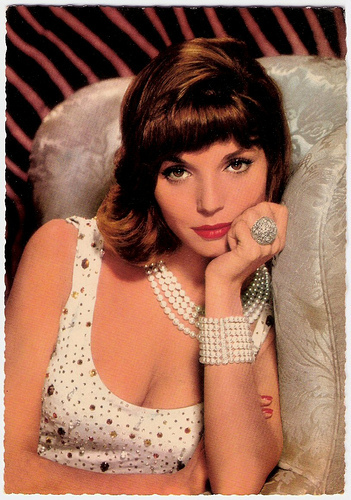
German postcard by Krüger, no. 902/255.
Glamorous Elsa Martinelli (1935) is an Italian actress and former fashion model. She showed her beautiful curves in many European and Hollywood productions of the 1950s and 1960s, but somehow she never became the star she was destined to become in the mid-1950s.
11. Marina Berti: 5401 views

Italian postcard by Bromofoto, Milano (Milan), no. 384. Photo: Atlantisfilm.
Italian actress Marina Berti (1924-2002) is a forgotten diva from the postwar Italian cinema. She was a popular starlet of Italian and Hollywood films in the 1940s and early 1950s – sometimes credited as Maureen Melrose.
10. Elke Sommer: 6819 views
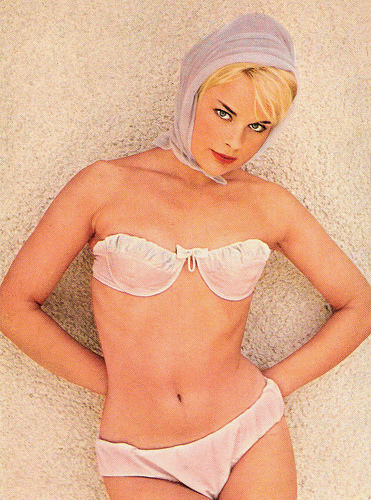
German postcard by UFA (Universum-Film Aktiengesellschaft), Berlin-Templehof, no. CK 438. Photo: Herbert Fried / UFA.
Gorgeous Elke Sommer (1940) was a German sex symbol who conquered Hollywood in the early 1960s. With her trademark pouty lips, high cheek bones and sky-high bouffant hair-dos, Sommer made 99 film and television appearances between 1959 and 2005. The blonde film star was also one of the most popular pin-up girls of the sixties, and posed twice for Playboy.
9. Gérard Philipe: 6904 views
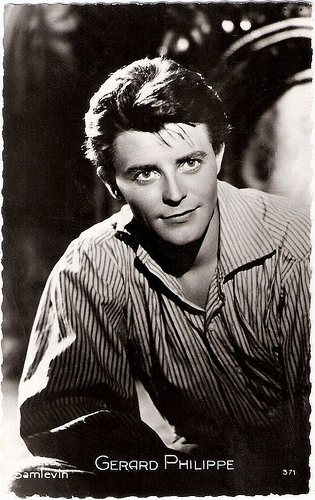
French Postcard by Editions P.I., Paris, no. 371. Photo: Sam Lévin.
Gérard Philipe (1922–1959) was adored for his good looks, but he was also a very talented actor. He was sought out by France's preeminent directors for his versatility and professionalism. His early death has elevated him to a near legendary status in France.
8. Marion Michael: 7161 views
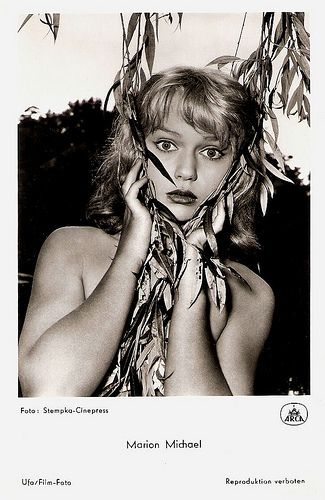
German postcard by Universum-Film Aktiengesellschaft (UFA), Berlin-Tempelhof, no. FK 3865. Retail price: 25 Pfg. Photo: Stempka-Cinepress / Arca.
German film actress and singer Marion Michael (1940-2007) was a one hit wonder as Liane, the jungle girl. As the female Tarzan, the blonde beauty has become an icon of the German cinema.
7. Ornella Muti: 7806 views
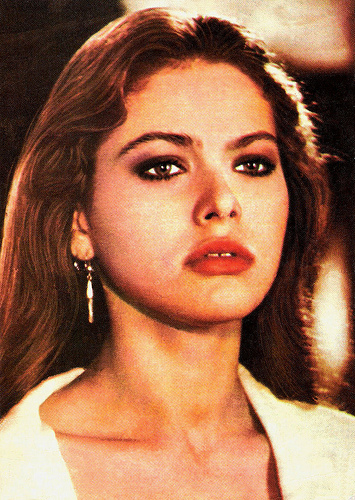
Romanian postcard by Casa Filmului Acin.
Beautiful Italian actress Ornella Muti (1955) often appeared in sexy Italian comedies and dramas, but she also worked for such major European directors as Marco Ferreri, Francesco Rosi and Volker Schlöndorff. English language audiences probably know her best as the sensuous Princess Aura in Flash Gordon (1980).
6. Aïché Nana: 8581 views
Italian postcard by Rotalcolor, Milano (Milan), no. 238.
In 1958, a 'striptease' by the then 18 years old Lebanese actress and former belly dancer Aïché Nana (1940-2014) at a Roman party caused an international scandal. Subsequently she became one of the icons of ‘La Dolce Vita’, the liberated era of sex, drugs and rock & roll as documented by Federico Fellini. Aïché Nana appeared in 15 European films between 1956 and 1985.
5. Mylène Démongeot: 9692 views
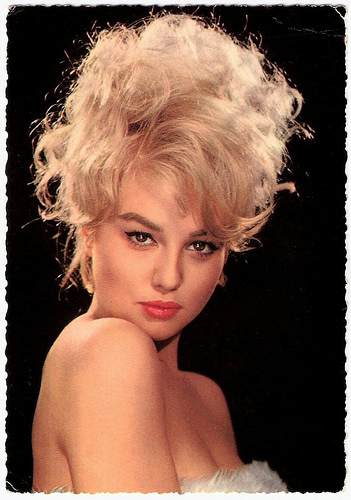
German postcard by Kruger, no. 902/162.
Beautiful Mylène Demongeot (1935) became one of the blond sex symbols of the French cinema when she seduced Yves Montand in Les sorcières de Salem (1957). The coquettish French actress would go on to co-star in the three Fantômas adventures and many other European films of the 1950s and 1960s. In the 1980s she also became a producer.
4. Claudia Cardinale: 9841 views
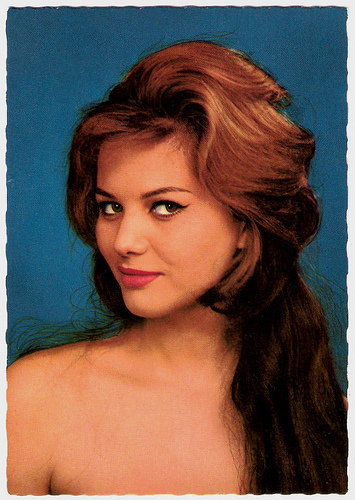
German postcard by Filmbilder-Vertrieb Ernst Freihoff, Essen, no. H 72.
Italian actress Claudia Cardinale (1938) is one of Europe's iconic and most versatile film stars. The combination of her beauty, dark, flashing eyes, explosive sexuality and genuine acting talent virtually guaranteed her stardom. Her most notable films include the classics 8½ (Federico Fellini, 1963), Il Gattopardo (Luchino Visconti, 1963), and Once Upon a Time in the West (Sergio Leone, 1968).
3. Bud Spencer: 10705 views
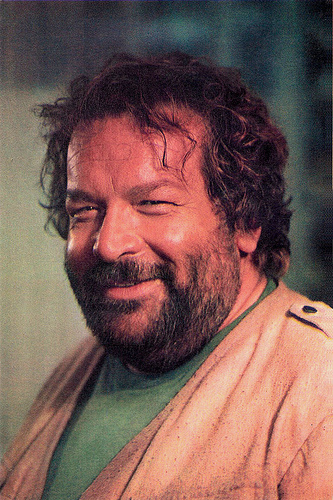
Italian postcard. Promotional card for Io Sto Con Gli Ippopotami/I'm for the Hippopotamus (Italo Zingarelli, 1979).
On 27 June 2016, 86-years old Bud Spencer has died in Rome, Italy of natural causes. The huge Italian actor with his trademark black beard was the popular star of many Spaghetti Westerns and low-budget action films of the late 1960s and 1970s. In 18 films he co-starred with his long time film partner Terence Hill. In his youth, Spencer (then: Carlo Pedersoli) was the first Italian to swim 100 metres in less than a minute. He also had a degree in law, and he registered several patents.
2. Marina Vlady: 13806 views
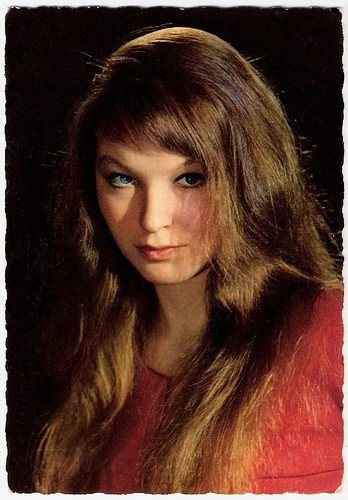
French postcard by E.D.U.G., no. 74. Photo: Sam Lévin.
Sensual and alluring French star Marina Vlady (1938) had the makings of just another blonde bombshell, but in 1963 she stunned everybody with her performance in L’Ape Regine/The Conjugal Bed. At the Cannes Film Festival the feline beauty won that year the Golden Palm for Best Actress.
1. Alain Delon: 26048 views
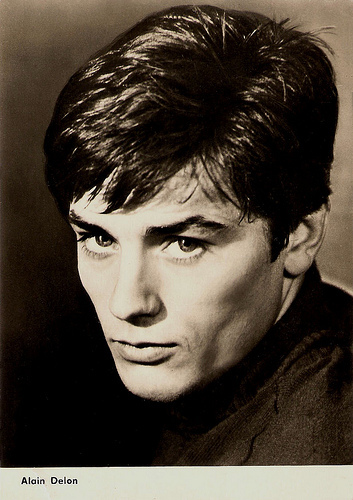
East-German postcard by VEB Progress Film-Vertrieb, Berlin, 1967. retail price: 0,20 MDN.Photo: publicity still for Rocco e i suoi fratelli/Rocco and his brothers (Luchino Visconti, 1960).
Alain Delon (1935) was the breathtakingly good-looking James Dean of the European cinema of the late 1950s and early 1960s who proved in this film that he was also a magnificent actor.
Happy New Year!
12. Elsa Martinelli: 4900 views

German postcard by Krüger, no. 902/255.
Glamorous Elsa Martinelli (1935) is an Italian actress and former fashion model. She showed her beautiful curves in many European and Hollywood productions of the 1950s and 1960s, but somehow she never became the star she was destined to become in the mid-1950s.
11. Marina Berti: 5401 views

Italian postcard by Bromofoto, Milano (Milan), no. 384. Photo: Atlantisfilm.
Italian actress Marina Berti (1924-2002) is a forgotten diva from the postwar Italian cinema. She was a popular starlet of Italian and Hollywood films in the 1940s and early 1950s – sometimes credited as Maureen Melrose.
10. Elke Sommer: 6819 views

German postcard by UFA (Universum-Film Aktiengesellschaft), Berlin-Templehof, no. CK 438. Photo: Herbert Fried / UFA.
Gorgeous Elke Sommer (1940) was a German sex symbol who conquered Hollywood in the early 1960s. With her trademark pouty lips, high cheek bones and sky-high bouffant hair-dos, Sommer made 99 film and television appearances between 1959 and 2005. The blonde film star was also one of the most popular pin-up girls of the sixties, and posed twice for Playboy.
9. Gérard Philipe: 6904 views

French Postcard by Editions P.I., Paris, no. 371. Photo: Sam Lévin.
Gérard Philipe (1922–1959) was adored for his good looks, but he was also a very talented actor. He was sought out by France's preeminent directors for his versatility and professionalism. His early death has elevated him to a near legendary status in France.
8. Marion Michael: 7161 views

German postcard by Universum-Film Aktiengesellschaft (UFA), Berlin-Tempelhof, no. FK 3865. Retail price: 25 Pfg. Photo: Stempka-Cinepress / Arca.
German film actress and singer Marion Michael (1940-2007) was a one hit wonder as Liane, the jungle girl. As the female Tarzan, the blonde beauty has become an icon of the German cinema.
7. Ornella Muti: 7806 views

Romanian postcard by Casa Filmului Acin.
Beautiful Italian actress Ornella Muti (1955) often appeared in sexy Italian comedies and dramas, but she also worked for such major European directors as Marco Ferreri, Francesco Rosi and Volker Schlöndorff. English language audiences probably know her best as the sensuous Princess Aura in Flash Gordon (1980).
6. Aïché Nana: 8581 views
Italian postcard by Rotalcolor, Milano (Milan), no. 238.
In 1958, a 'striptease' by the then 18 years old Lebanese actress and former belly dancer Aïché Nana (1940-2014) at a Roman party caused an international scandal. Subsequently she became one of the icons of ‘La Dolce Vita’, the liberated era of sex, drugs and rock & roll as documented by Federico Fellini. Aïché Nana appeared in 15 European films between 1956 and 1985.
5. Mylène Démongeot: 9692 views

German postcard by Kruger, no. 902/162.
Beautiful Mylène Demongeot (1935) became one of the blond sex symbols of the French cinema when she seduced Yves Montand in Les sorcières de Salem (1957). The coquettish French actress would go on to co-star in the three Fantômas adventures and many other European films of the 1950s and 1960s. In the 1980s she also became a producer.
4. Claudia Cardinale: 9841 views

German postcard by Filmbilder-Vertrieb Ernst Freihoff, Essen, no. H 72.
Italian actress Claudia Cardinale (1938) is one of Europe's iconic and most versatile film stars. The combination of her beauty, dark, flashing eyes, explosive sexuality and genuine acting talent virtually guaranteed her stardom. Her most notable films include the classics 8½ (Federico Fellini, 1963), Il Gattopardo (Luchino Visconti, 1963), and Once Upon a Time in the West (Sergio Leone, 1968).
3. Bud Spencer: 10705 views

Italian postcard. Promotional card for Io Sto Con Gli Ippopotami/I'm for the Hippopotamus (Italo Zingarelli, 1979).
On 27 June 2016, 86-years old Bud Spencer has died in Rome, Italy of natural causes. The huge Italian actor with his trademark black beard was the popular star of many Spaghetti Westerns and low-budget action films of the late 1960s and 1970s. In 18 films he co-starred with his long time film partner Terence Hill. In his youth, Spencer (then: Carlo Pedersoli) was the first Italian to swim 100 metres in less than a minute. He also had a degree in law, and he registered several patents.
2. Marina Vlady: 13806 views

French postcard by E.D.U.G., no. 74. Photo: Sam Lévin.
Sensual and alluring French star Marina Vlady (1938) had the makings of just another blonde bombshell, but in 1963 she stunned everybody with her performance in L’Ape Regine/The Conjugal Bed. At the Cannes Film Festival the feline beauty won that year the Golden Palm for Best Actress.
1. Alain Delon: 26048 views

East-German postcard by VEB Progress Film-Vertrieb, Berlin, 1967. retail price: 0,20 MDN.Photo: publicity still for Rocco e i suoi fratelli/Rocco and his brothers (Luchino Visconti, 1960).
Alain Delon (1935) was the breathtakingly good-looking James Dean of the European cinema of the late 1950s and early 1960s who proved in this film that he was also a magnificent actor.
Happy New Year!
Published on December 30, 2016 22:00
December 29, 2016
Marlene's 12 Men
One of our favourite online places is 'La collectionneuse'. Marlène Pilaete creates here beautiful albums with her vintage postcards of international film actresses. Each album is a precious, glittering diamond. But doesn't Marlene collect postcards of male stars? Yeah, she does, and today EFSP can present you a selection!
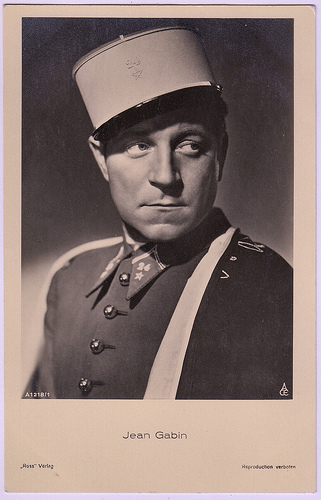
German postcard by Ross Verlag, no, A 1218, 1937-1938. Photo: ACE. Collection: Marlene Pilaete. Comment Marlène: "my favourite French actor in one of my favourite French movies, Gueule d'amour (1937)."
French actor and war hero Jean Gabin (1904-1976) was one of the great stars of the European cinema. In the 1930s he became the personification of the tragic romantic hero of the poetic realist film. Whether he played a legionnaire in Gueule d'amour (1937), a deserter in Le Quai des brumes (1938) or the head gangster in Pépé le Moko (1937), Gabin was impeccable, bringing a tragic humanity to each of his appearances which the public adored. After the war Gabin was reborn as a tough anti-hero, set in his beliefs, feared and respected by all, the Godfather of French cinema.
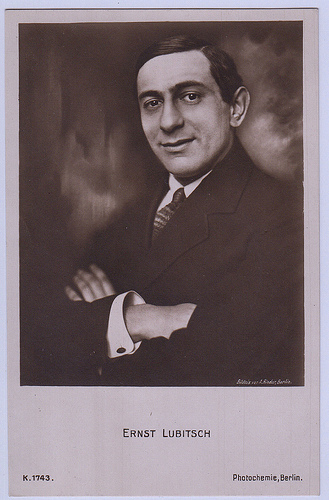
German postcard by Photochemie, no. K. 1743. Photo: Alex Binder, Paris. Collection: Marlene Pilaete.
Ernst Lubitsch (1892-1947) was a German-American actor, screenwriter, producer and film director. His urbane comedies of manners gave him the reputation of being Hollywood's most elegant and sophisticated director; as his prestige grew, his films were promoted as having ‘the Lubitsch touch.’ He was nominated three times for the Oscar for Best Director and in 1947, he received an Honorary Academy Award.
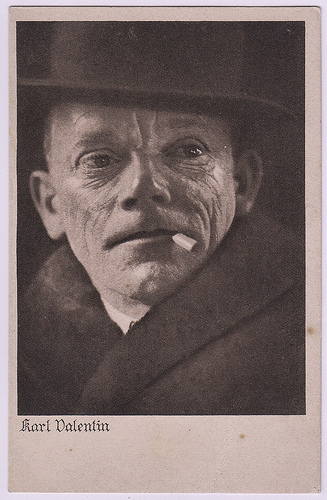
German postcard by Heliogravüre J.B. Obernetter, München. Collection: Marlene Pilaete.
Bavarian comedian Karl Valentin (1882-1948) starred in many silent German films in the 1920s. Valentin was also active as a cabaret performer, clown, author and film producer, and was sometimes called the 'Charlie Chaplin of Germany'. His work influenced artists like Bertolt Brecht and Samuel Beckett.
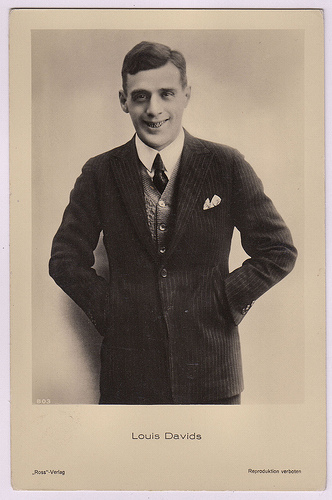
German postcard by Ross Verlag, no. 803, 1925-1926. Collection: Marlene Pilaete.
Louis Davids (1883-1939) was a Dutch cabaret and revue artist who also appeared in several Dutch films, both during the silent and the sound era. He is widely considered one of the Netherlands' biggest names in performing arts ever.
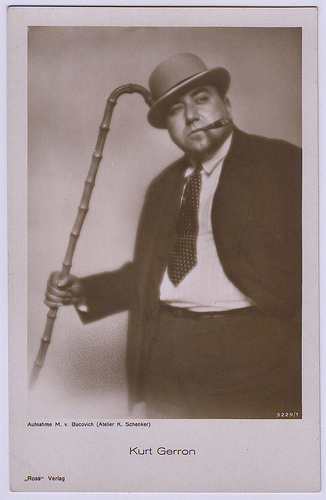
German postcard.by Ross Verlag, no. 3229/1, 1928-1929. Photo: M. von Bukovich (Atelier K. Schenker). Collection: Marlene Pilaete.
German actor Kurt Gerron (1897-1944) starred on stage in the original version of Bertolt Brecht's and Kurt Weill's Dreigroschen Oper/Three-Penny Opera as Tiger Brown. He also participated in the very successful films Die Drei von der Tankstelle/The Three of the Gas Station (1930) and Der Blaue Engel/The Blue Angel (1930). The Ufa offered him to work as a director, but in 1933 he was forced by the Nazis to leave the film studio. He left Germany, and worked successfully as a director in the Netherlands. In 1943 he was sent to a concentration camp and was forced to direct the propaganda-pseudo-documentary Der Fuehrer schenkt den Juden eine Stadt (1944). After that he was murdered in Auschwitz.
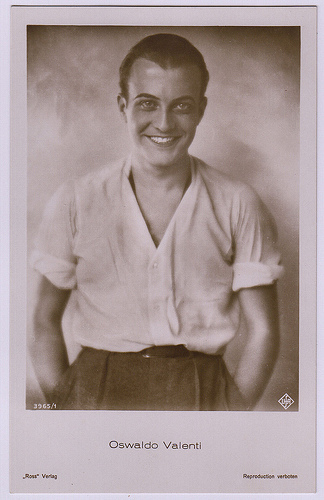
German postcard by Ross Verlag, no. 3965/1, 1928-1929. Photo: Ufa. Publicity still for Ungarische Rhapsodie/Hungarian Rhapsody (Hanns Schwarz, 1928). Collection: Marlene Pilaete.
Osvaldo Valenti (1906-1945) was an Italian film actor, who appeared in 56 films between 1928 and 1945. He and his lover, actress Luisa Ferida, were executed by partisans in Milan, Italy, due to their links with Fascism.
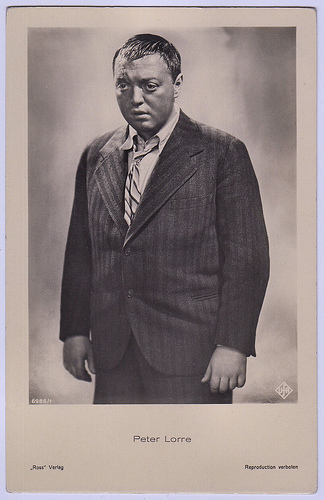
German postcard by Ross Verlag, no. 6989/1, 1931-1932. Photo: Ufa. Publicity still for Schuß im Morgengrauen/A Shot at Dawn (Alfred Zeisler, 1932). Collection: Marlene Pilaete.
Peter Lorre (1904–1964) with his trademark large, popped eyes, his toothy grin and his raspy voice was an American actor of Jewish Austro-Hungarian descent. He was an international sensation as the psychopathic child murderer in Fritz Lang’s M (1931). He later became a popular actor in two British Hitchcock thrillers and in a series of Hollywood crime films and mysteries. Although he was frequently typecast as a sinister foreigner in the US, he also became the star of the successful Mr. Moto detective series.
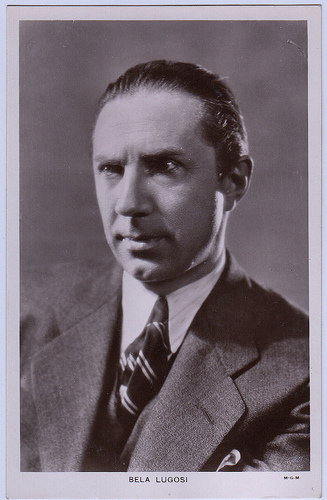
British postcard in the Picturegoer series, no. 910. Photo: MGM. Collection: Marlene Pilaete.
Hungarian actor Béla Lugosi (1882–1956) is best known as the vampire Count Dracula in the horror classic Dracula (1931). He started his film career in the silent Hungarian cinema and also appeared in German silent films. In the last phase of his career he became the star of several of Ed Wood's low budget epics and other poverty row shockers.
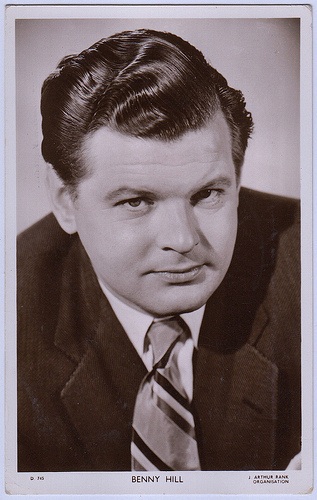
British postcard.in the Picturegoer series. no. D 745. Photo: J. Arthur Rank Organisation.Collection: Marlene Pilaete.
English comedian and actor Benny Hill (1924-1992) is best remembered for his long-running The Benny Hill Show on TV, full of slapstick, burlesque and double entendres. Hill's film credits include Those Magnificent Men in their Flying Machines (1965), Chitty Chitty Bang Bang (1968), and The Italian Job (1969).
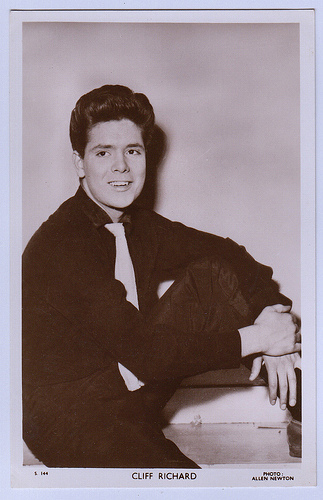
British postcard in the Picturegoer series, no. S 144. Photo: Allen newton. Collection: Marlene Pilaete.
In the late 1950s, British singer, actor and Sir Cliff Richard (1940) was known as Britain's answer to Elvis Presley. The ‘Cliff Richard musical’ became the number one cinema box office attraction in Britain for both 1962 and 1963.
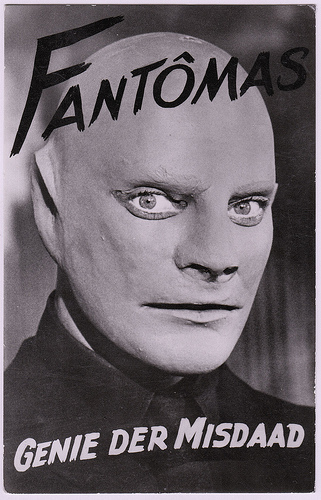
Dutch promotional postcard for Fantômas (André Hunebelle, 1964). Caption: Fantomas - Genius of crime. Collection: Marlene Pilaete.
With his heroic physique, Jean Marais (1913-1998) was France’s answer to Errol Flynn, the epitome of the swashbuckling romantic hero of French cinema. The blonde and incredibly good-looking actor played over 100 roles in film and on television, and was also known as a director, writer, painter and sculptor. His mentor was the legendary poet and director Jean Cocteau, who was also his lover.
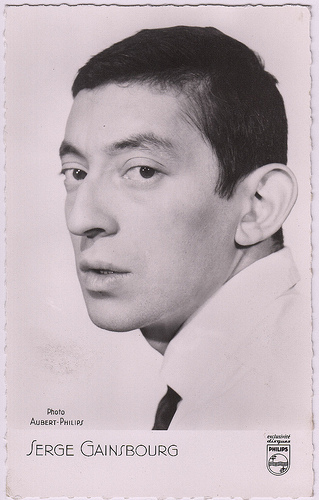
French postcard. Photo: Aubert-Philips. Collection: Marlene Pilaete.
French singer and composer Serge Gainsbourg (1928-1991) was one of the most important figures in French pop music, renowned for provocative and scandalous releases as Je t'aime... moi non plus, as well as for his artistic output, which embodied many genres. He appeared in several French and Italian films and directed four films, in which his longtime lover Jane Birkin starred.
12 Men
Over the years, Marlene Pilaete has acquired quite a few male stars postcards but they were unsorted, she wrote me a while ago. At my request, she started to sort them out and mailed me: "I've began little by little to sort them out ... but I didn't realize that I had so many." Finally, after Christmas, a mail from Brussels, Belgium arrived: "It was not easy but I hope that the choices I've made will be interesting. Of course, I've chosen European people and I've selected postcards which are not on your blog." And what a wonderful selection it is: full of interesting curiosities (Benny Hill!) and beautiful, little-seen images of classic stars. I especially adore the incredible Louis Davids and Kurt Gerron postcards. Never seen before, never!
Merci beaucoup, Marlène!

German postcard by Ross Verlag, no, A 1218, 1937-1938. Photo: ACE. Collection: Marlene Pilaete. Comment Marlène: "my favourite French actor in one of my favourite French movies, Gueule d'amour (1937)."
French actor and war hero Jean Gabin (1904-1976) was one of the great stars of the European cinema. In the 1930s he became the personification of the tragic romantic hero of the poetic realist film. Whether he played a legionnaire in Gueule d'amour (1937), a deserter in Le Quai des brumes (1938) or the head gangster in Pépé le Moko (1937), Gabin was impeccable, bringing a tragic humanity to each of his appearances which the public adored. After the war Gabin was reborn as a tough anti-hero, set in his beliefs, feared and respected by all, the Godfather of French cinema.

German postcard by Photochemie, no. K. 1743. Photo: Alex Binder, Paris. Collection: Marlene Pilaete.
Ernst Lubitsch (1892-1947) was a German-American actor, screenwriter, producer and film director. His urbane comedies of manners gave him the reputation of being Hollywood's most elegant and sophisticated director; as his prestige grew, his films were promoted as having ‘the Lubitsch touch.’ He was nominated three times for the Oscar for Best Director and in 1947, he received an Honorary Academy Award.

German postcard by Heliogravüre J.B. Obernetter, München. Collection: Marlene Pilaete.
Bavarian comedian Karl Valentin (1882-1948) starred in many silent German films in the 1920s. Valentin was also active as a cabaret performer, clown, author and film producer, and was sometimes called the 'Charlie Chaplin of Germany'. His work influenced artists like Bertolt Brecht and Samuel Beckett.

German postcard by Ross Verlag, no. 803, 1925-1926. Collection: Marlene Pilaete.
Louis Davids (1883-1939) was a Dutch cabaret and revue artist who also appeared in several Dutch films, both during the silent and the sound era. He is widely considered one of the Netherlands' biggest names in performing arts ever.

German postcard.by Ross Verlag, no. 3229/1, 1928-1929. Photo: M. von Bukovich (Atelier K. Schenker). Collection: Marlene Pilaete.
German actor Kurt Gerron (1897-1944) starred on stage in the original version of Bertolt Brecht's and Kurt Weill's Dreigroschen Oper/Three-Penny Opera as Tiger Brown. He also participated in the very successful films Die Drei von der Tankstelle/The Three of the Gas Station (1930) and Der Blaue Engel/The Blue Angel (1930). The Ufa offered him to work as a director, but in 1933 he was forced by the Nazis to leave the film studio. He left Germany, and worked successfully as a director in the Netherlands. In 1943 he was sent to a concentration camp and was forced to direct the propaganda-pseudo-documentary Der Fuehrer schenkt den Juden eine Stadt (1944). After that he was murdered in Auschwitz.

German postcard by Ross Verlag, no. 3965/1, 1928-1929. Photo: Ufa. Publicity still for Ungarische Rhapsodie/Hungarian Rhapsody (Hanns Schwarz, 1928). Collection: Marlene Pilaete.
Osvaldo Valenti (1906-1945) was an Italian film actor, who appeared in 56 films between 1928 and 1945. He and his lover, actress Luisa Ferida, were executed by partisans in Milan, Italy, due to their links with Fascism.

German postcard by Ross Verlag, no. 6989/1, 1931-1932. Photo: Ufa. Publicity still for Schuß im Morgengrauen/A Shot at Dawn (Alfred Zeisler, 1932). Collection: Marlene Pilaete.
Peter Lorre (1904–1964) with his trademark large, popped eyes, his toothy grin and his raspy voice was an American actor of Jewish Austro-Hungarian descent. He was an international sensation as the psychopathic child murderer in Fritz Lang’s M (1931). He later became a popular actor in two British Hitchcock thrillers and in a series of Hollywood crime films and mysteries. Although he was frequently typecast as a sinister foreigner in the US, he also became the star of the successful Mr. Moto detective series.

British postcard in the Picturegoer series, no. 910. Photo: MGM. Collection: Marlene Pilaete.
Hungarian actor Béla Lugosi (1882–1956) is best known as the vampire Count Dracula in the horror classic Dracula (1931). He started his film career in the silent Hungarian cinema and also appeared in German silent films. In the last phase of his career he became the star of several of Ed Wood's low budget epics and other poverty row shockers.

British postcard.in the Picturegoer series. no. D 745. Photo: J. Arthur Rank Organisation.Collection: Marlene Pilaete.
English comedian and actor Benny Hill (1924-1992) is best remembered for his long-running The Benny Hill Show on TV, full of slapstick, burlesque and double entendres. Hill's film credits include Those Magnificent Men in their Flying Machines (1965), Chitty Chitty Bang Bang (1968), and The Italian Job (1969).

British postcard in the Picturegoer series, no. S 144. Photo: Allen newton. Collection: Marlene Pilaete.
In the late 1950s, British singer, actor and Sir Cliff Richard (1940) was known as Britain's answer to Elvis Presley. The ‘Cliff Richard musical’ became the number one cinema box office attraction in Britain for both 1962 and 1963.

Dutch promotional postcard for Fantômas (André Hunebelle, 1964). Caption: Fantomas - Genius of crime. Collection: Marlene Pilaete.
With his heroic physique, Jean Marais (1913-1998) was France’s answer to Errol Flynn, the epitome of the swashbuckling romantic hero of French cinema. The blonde and incredibly good-looking actor played over 100 roles in film and on television, and was also known as a director, writer, painter and sculptor. His mentor was the legendary poet and director Jean Cocteau, who was also his lover.

French postcard. Photo: Aubert-Philips. Collection: Marlene Pilaete.
French singer and composer Serge Gainsbourg (1928-1991) was one of the most important figures in French pop music, renowned for provocative and scandalous releases as Je t'aime... moi non plus, as well as for his artistic output, which embodied many genres. He appeared in several French and Italian films and directed four films, in which his longtime lover Jane Birkin starred.
12 Men
Over the years, Marlene Pilaete has acquired quite a few male stars postcards but they were unsorted, she wrote me a while ago. At my request, she started to sort them out and mailed me: "I've began little by little to sort them out ... but I didn't realize that I had so many." Finally, after Christmas, a mail from Brussels, Belgium arrived: "It was not easy but I hope that the choices I've made will be interesting. Of course, I've chosen European people and I've selected postcards which are not on your blog." And what a wonderful selection it is: full of interesting curiosities (Benny Hill!) and beautiful, little-seen images of classic stars. I especially adore the incredible Louis Davids and Kurt Gerron postcards. Never seen before, never!
Merci beaucoup, Marlène!
Published on December 29, 2016 22:00
December 28, 2016
Kim Parker
Beautiful starlet Kim Parker (1933) was born in Austria as Herta Padawer. She played in a dozen European films including Pasaporte al infierno/Hi-Jack (1956) and Undercover Girl (1958). Her main claim to fame is the British Science Fiction film Fiend Without a Face (1958) about invisible atomic monsters which attack a U.S. Armed Forces base and the local residents.
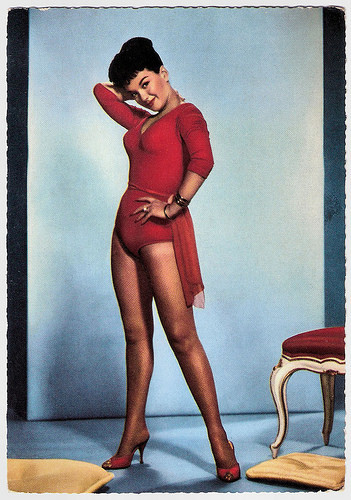
German postcard by ISV, Sort V/6.
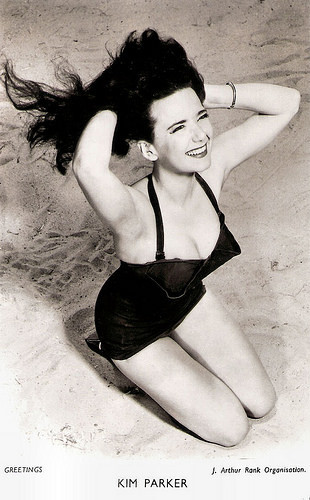
British postcard in the Greetings series. Photo: J. Arthur Rank Organisation.
Fire Maiden from Outer Space
Kim Parker was born in 1933 in Austria as Herta Padawer. Her nickname was Kim. During WW II, she was interned in a German concentration camp and in 1945 she went as a refugee to England. She attended an art school and then commenced her career as a freelance illustrator, augmenting her earnings by modeling.
The beautiful brunette wanted to become an actress, changed her name to Kim Parker and moved to London. There she did extra work in the adventure film The Seekers (Ken Annakin, 1954), starring Jack Hawkins, and the comedy Up to His Neck (John Paddy Carstairs, 1954).
The following year she found a bigger part in the adventure film Stock Car (Wolf Rilla, 1955), starring Canadian actor Paul Carpenter. The starlet and the leading man fell in love and they married the same year. She next played a fire maiden in the Science Fiction film Fire Maidens from Outer Space (Cy Roth, 1956), which starred Susan Shaw and her husband Paul Carpenter.
With her husband she also appeared in the Spanish/British coproduction Pasaporte al infierno/Hi-Jack (Cecil H. Williamson, 1956) about a forger, who flees to Spain but then finds that his daughter is kidnapped by a ruthless gang. She played one of the three graces (another was Shirley Anne Field ) in the musical The Good Companions (J. Lee Thompson, 1957) about a touring variety troupe. She appeared again in a film which starred her husband, Undercover Girl (1958).
Parker had her biggest part in the independently made British production Fiend Without a Face (Arthur Crabtree, 1958). The Science Fiction film tells about mysterious deaths at the hands of a mentally created invisible life form that feeds on atomic power and then steals human brains and spinal columns to use as bodies in order to multiply its numbers. The screenplay by Herbert J. Leder was based upon Amelia Reynolds Long's 1930 short story The Thought Monster, originally published in the March 1930 issue of Weird Tales magazine.
Fiend Without a Face created a public uproar after its British premiere, according to Wikipedia: "The British Board of Film Censors had demanded a number of cuts before its release and finally granted the film an 'X' certificate, but newspaper critics were still aghast at its horrifying special effects. Questions were actually raised in Parliament as to why British censors had allowed Fiend Without a Face to be released, notably: 'What is the British film industry thinking by trying to beat Hollywood at its own game of overdosing on blood and gore'. Criterion released a deluxe DVD edition of the film in 2007.
Kim's career went nowhere. Her next film role was a secretary in the comedy-drama Count Your Blessings (Jean Negulesco, 1959), starring Deborah Kerr and Rossano Brazzi . It was her last film credit. In 1958, she had filed a divorce petition against Carpenter in London, naming bosomy showgirl Sabrina as co-respondent. Later, Kim Parker moved to the USA and married Terry J. Howell. In 1977, her second marriage also ended in a divorce.
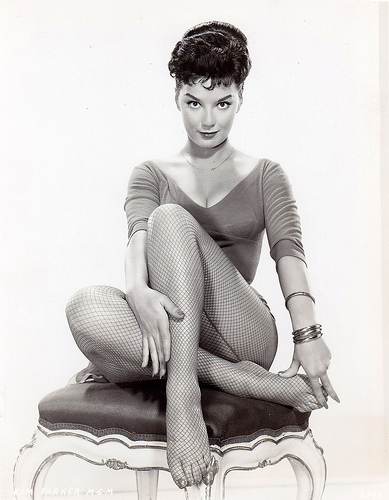
Kim Parker - c. 1959. Source: thetag1 (Flickr).
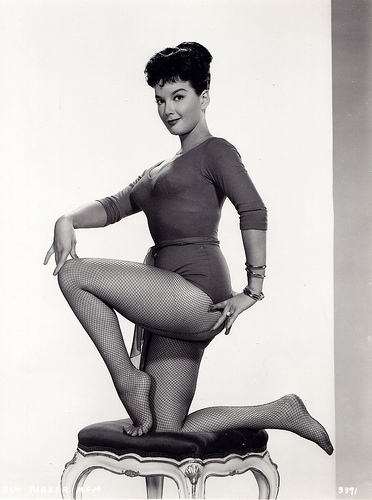
Kim Parker - c. 1959. Source: thetag1 (Flickr).
Trailer Fiend Without a Face (1958). Source: Obscure Trailers (YouTube).
Sources: Glamour Girls of the Silver Screen, Wikipedia and .

German postcard by ISV, Sort V/6.

British postcard in the Greetings series. Photo: J. Arthur Rank Organisation.
Fire Maiden from Outer Space
Kim Parker was born in 1933 in Austria as Herta Padawer. Her nickname was Kim. During WW II, she was interned in a German concentration camp and in 1945 she went as a refugee to England. She attended an art school and then commenced her career as a freelance illustrator, augmenting her earnings by modeling.
The beautiful brunette wanted to become an actress, changed her name to Kim Parker and moved to London. There she did extra work in the adventure film The Seekers (Ken Annakin, 1954), starring Jack Hawkins, and the comedy Up to His Neck (John Paddy Carstairs, 1954).
The following year she found a bigger part in the adventure film Stock Car (Wolf Rilla, 1955), starring Canadian actor Paul Carpenter. The starlet and the leading man fell in love and they married the same year. She next played a fire maiden in the Science Fiction film Fire Maidens from Outer Space (Cy Roth, 1956), which starred Susan Shaw and her husband Paul Carpenter.
With her husband she also appeared in the Spanish/British coproduction Pasaporte al infierno/Hi-Jack (Cecil H. Williamson, 1956) about a forger, who flees to Spain but then finds that his daughter is kidnapped by a ruthless gang. She played one of the three graces (another was Shirley Anne Field ) in the musical The Good Companions (J. Lee Thompson, 1957) about a touring variety troupe. She appeared again in a film which starred her husband, Undercover Girl (1958).
Parker had her biggest part in the independently made British production Fiend Without a Face (Arthur Crabtree, 1958). The Science Fiction film tells about mysterious deaths at the hands of a mentally created invisible life form that feeds on atomic power and then steals human brains and spinal columns to use as bodies in order to multiply its numbers. The screenplay by Herbert J. Leder was based upon Amelia Reynolds Long's 1930 short story The Thought Monster, originally published in the March 1930 issue of Weird Tales magazine.
Fiend Without a Face created a public uproar after its British premiere, according to Wikipedia: "The British Board of Film Censors had demanded a number of cuts before its release and finally granted the film an 'X' certificate, but newspaper critics were still aghast at its horrifying special effects. Questions were actually raised in Parliament as to why British censors had allowed Fiend Without a Face to be released, notably: 'What is the British film industry thinking by trying to beat Hollywood at its own game of overdosing on blood and gore'. Criterion released a deluxe DVD edition of the film in 2007.
Kim's career went nowhere. Her next film role was a secretary in the comedy-drama Count Your Blessings (Jean Negulesco, 1959), starring Deborah Kerr and Rossano Brazzi . It was her last film credit. In 1958, she had filed a divorce petition against Carpenter in London, naming bosomy showgirl Sabrina as co-respondent. Later, Kim Parker moved to the USA and married Terry J. Howell. In 1977, her second marriage also ended in a divorce.

Kim Parker - c. 1959. Source: thetag1 (Flickr).

Kim Parker - c. 1959. Source: thetag1 (Flickr).
Trailer Fiend Without a Face (1958). Source: Obscure Trailers (YouTube).
Sources: Glamour Girls of the Silver Screen, Wikipedia and .
Published on December 28, 2016 22:00
December 27, 2016
Tödlicher Irrtum (1970)
Tödlicher Irrtum/Fatal Error (Konrad Petzold, 1970) is a typical Ostern (or Eastern), a Western produced in socialist East-Germany. Although all the characters of the film are fictitious, production company DEFA's fifth Ostern is based on real events that took place in the USA in 1898. The film is based on studies of the history and struggle of the Native Americans.
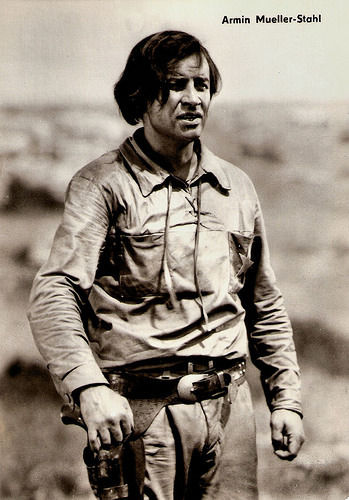
East-German postcard by VEB Progress Filmvertrieb, Berlin, no. 56/70. Photo: DEFA / Blümel Publicity still for Tödlicher Irrtum/Fatal Error (Konrad Petzold, 1970) with Armin Mueller-Stahl .
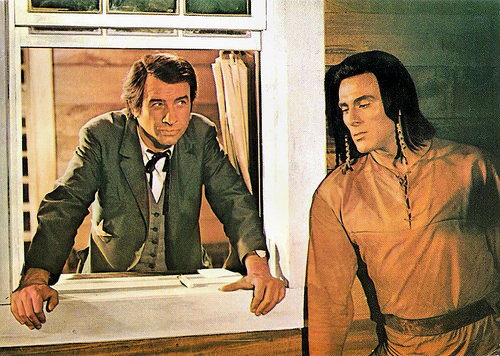
East-German postcard by VEB Progress Film-Verleih, Berlin, no. 9/76. Photo: DEFA / Blümel. Publicity still for Tödlicher Irrtum/Fatal Error (Konrad Petzold, 1970) with Armin Mueller-Stahl and Gojko Mitić . Caption: Two of the oil sharks, which are commissioned by the capital-heavy Mr. Allison, are placed. But what is the use of that for Shave Head? His half brother, the assistant sheriff Chris Howard, has paid with his life. As many chieftains before him, Shave Head had thought that Indians could be partakers of the wealth of the oil wells found on the reservation sites.
An act of revenge
At the end of the 19th century, the Wyoming Oil Company has established itself in the vicinity of Wind River City at the foot of the Rocky Mountains, where they have been illegally pumping oil from Native American territory.
One of the company's greedy agents, Mike Allison (Rolf Hoppe), kicks out both his white partners and the Native Americans. He has his some of his associates secretly murdered and blames it on the Native Americans, who are then killed when they get in the way of his plans.
Five chiefs with lifelong shares in the Oil Company die mysteriously as a result. The young chief Shave Head ( Gojko Mitić ) asks his a half-blooded brother Chris Howard ( Armin Mueller-Stahl ) for help. Chris assumes the post of deputy sheriff and tries to expose Allison and the murderers.
When a representative of the Oil Company turns up in Wind River City and exposes Allison's plot, the white inhabitants begin to take sides. Allison does his utmost to defend himself and finally has the oil camp set on fire, passing it off as an act of revenge...
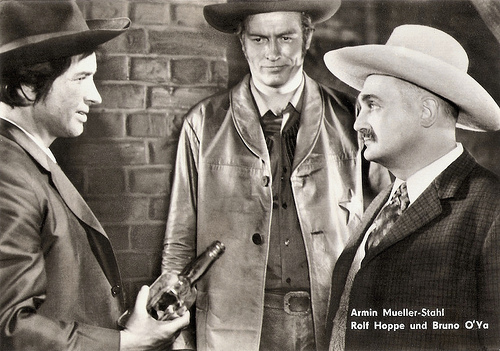
East-German postcard by VEB Progress Film-Vertrieb, Berlin, no. 65/70. Photo: DEFA / Blümel. Publicity still for Tödlicher Irrtum/Fatal Error (Konrad Petzold, 1970) with Armin Mueller-Stahl , Rolf Hoppe and Bruno O'Ya.
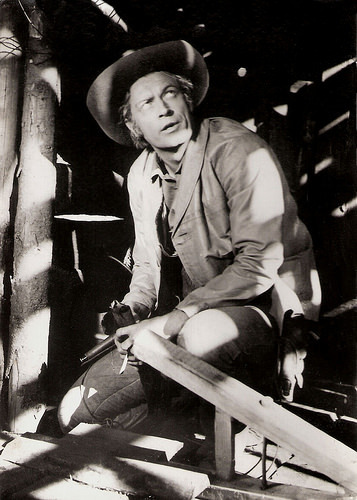
East-German postcard by VEB Progress Filmvertrieb, Berlin, no. 85/70a. Photo: DEFA / Blümel. Publicity still for Tödlicher Irrtum/Fatal Error (Konrad Petzold, 1970).
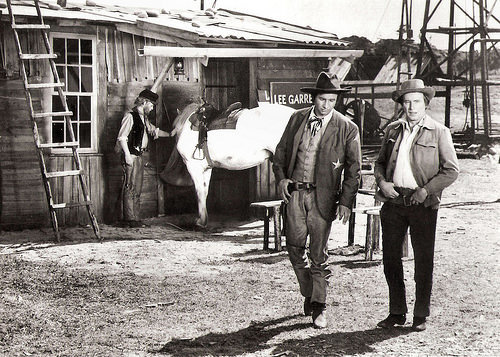
East-German postcard by VEB Progress Filmvertrieb, Berlin, no. 85/70d. Photo: DEFA / Blümel. Publicity still for Tödlicher Irrtum/Fatal Error (Konrad Petzold, 1970).
The Sauerkraut Western
The Ostern (Eastern) was the Soviet Union and Eastern Bloc countries' take on the Western.According to Wikipedia, the term Ostern refers to two related genres: to proper Red Westerns, set in America's 'Wild West' and mostly produced in East Germany and Czechoslovakia, and to Easterns (Osterns), set usually on the steppes or Asian parts of the USSR, especially during the Russian Revolution or the following Civil War.
Tödlicher Irrtum/Fatal Error (Konrad Petzold, 1970) is a typical Red Western and one of a total of 14 Osterns produced by the DEFA. The DEFA Osterns were directed by nine different directors, but they all had the same main actor: Yugoslav actor Gojko Mitić .
Mitic's career as the DEFA-chief of the Indians started in 1966 with Die Söhne der großen Bärin/The Sons of Great Bear (Josef Mach, 1966), based on the novel series of the same name by Liselotte Welskopf-Henrich and with Gojko Mitić in the leading role of Tokei-ihto. The film started a series of 'Indian films' by the DEFA studios which were very successful in Eastern Europe.
The DEFA Osterns are often compared to the Spaghetti Westerns, in that they use local scenery to double up for the American West. Favourite location for the 'Sauerkraut Western' (including the West-German Karl May films) was Yugoslavia.
Like the Karl May Westerns, Osterns like Die Söhne der großen Bärin/The Sons of Great Bear (1966) and Tödlicher Irrtum/Fatal Error (1970) turned the traditional American 'Cowboy and Indian' conventions on their head, casting the Native Americans as the heroes and the American Army as the villains.
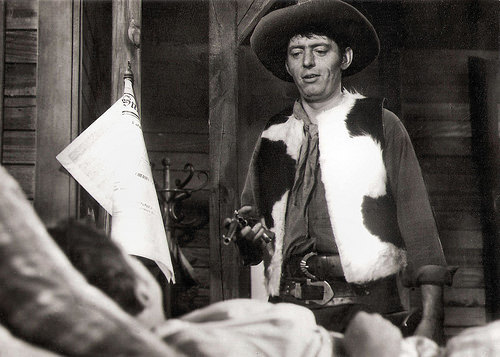
East-German postcard by VEB Progress Filmvertrieb, Berlin, no. 85/70f. Photo: DEFA / Blümel. Publicity still for Tödlicher Irrtum/Fatal Error (Konrad Petzold, 1970) with Rolf Ludwig.
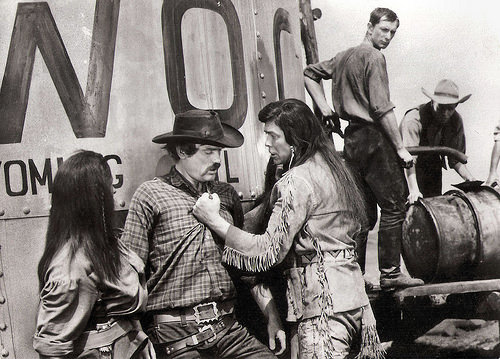
East-German postcard by VEB Progress Filmvertrieb, Berlin, no. 85/70h. Photo: DEFA / Blümel. Publicity still for Tödlicher Irrtum/Fatal Error (Konrad Petzold, 1970).
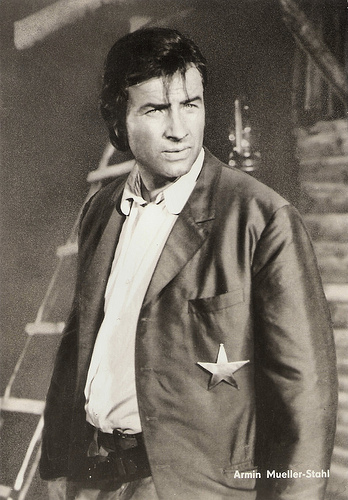
East-German postcard by VEB Progress Filmvertrieb, Berlin, no. 121/70. Photo: DEFA / Blümel Publicity still for Tödlicher Irrtum/Fatal Error (Konrad Petzold, 1970) with Armin Mueller-Stahl .
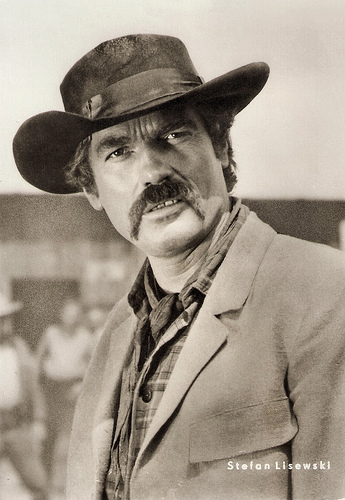
East-German postcard by VEB Progress Filmvertrieb, Berlin, no. 123/70. Photo: DEFA / Blümel. Publicity still for Tödlicher Irrtum/Fatal Error (1970) with Stefan Lisewski .
Source: Zweitausendeins.de Filmlexicon (German), Wikipedia (German and English) and IMDb.

East-German postcard by VEB Progress Filmvertrieb, Berlin, no. 56/70. Photo: DEFA / Blümel Publicity still for Tödlicher Irrtum/Fatal Error (Konrad Petzold, 1970) with Armin Mueller-Stahl .

East-German postcard by VEB Progress Film-Verleih, Berlin, no. 9/76. Photo: DEFA / Blümel. Publicity still for Tödlicher Irrtum/Fatal Error (Konrad Petzold, 1970) with Armin Mueller-Stahl and Gojko Mitić . Caption: Two of the oil sharks, which are commissioned by the capital-heavy Mr. Allison, are placed. But what is the use of that for Shave Head? His half brother, the assistant sheriff Chris Howard, has paid with his life. As many chieftains before him, Shave Head had thought that Indians could be partakers of the wealth of the oil wells found on the reservation sites.
An act of revenge
At the end of the 19th century, the Wyoming Oil Company has established itself in the vicinity of Wind River City at the foot of the Rocky Mountains, where they have been illegally pumping oil from Native American territory.
One of the company's greedy agents, Mike Allison (Rolf Hoppe), kicks out both his white partners and the Native Americans. He has his some of his associates secretly murdered and blames it on the Native Americans, who are then killed when they get in the way of his plans.
Five chiefs with lifelong shares in the Oil Company die mysteriously as a result. The young chief Shave Head ( Gojko Mitić ) asks his a half-blooded brother Chris Howard ( Armin Mueller-Stahl ) for help. Chris assumes the post of deputy sheriff and tries to expose Allison and the murderers.
When a representative of the Oil Company turns up in Wind River City and exposes Allison's plot, the white inhabitants begin to take sides. Allison does his utmost to defend himself and finally has the oil camp set on fire, passing it off as an act of revenge...

East-German postcard by VEB Progress Film-Vertrieb, Berlin, no. 65/70. Photo: DEFA / Blümel. Publicity still for Tödlicher Irrtum/Fatal Error (Konrad Petzold, 1970) with Armin Mueller-Stahl , Rolf Hoppe and Bruno O'Ya.

East-German postcard by VEB Progress Filmvertrieb, Berlin, no. 85/70a. Photo: DEFA / Blümel. Publicity still for Tödlicher Irrtum/Fatal Error (Konrad Petzold, 1970).

East-German postcard by VEB Progress Filmvertrieb, Berlin, no. 85/70d. Photo: DEFA / Blümel. Publicity still for Tödlicher Irrtum/Fatal Error (Konrad Petzold, 1970).
The Sauerkraut Western
The Ostern (Eastern) was the Soviet Union and Eastern Bloc countries' take on the Western.According to Wikipedia, the term Ostern refers to two related genres: to proper Red Westerns, set in America's 'Wild West' and mostly produced in East Germany and Czechoslovakia, and to Easterns (Osterns), set usually on the steppes or Asian parts of the USSR, especially during the Russian Revolution or the following Civil War.
Tödlicher Irrtum/Fatal Error (Konrad Petzold, 1970) is a typical Red Western and one of a total of 14 Osterns produced by the DEFA. The DEFA Osterns were directed by nine different directors, but they all had the same main actor: Yugoslav actor Gojko Mitić .
Mitic's career as the DEFA-chief of the Indians started in 1966 with Die Söhne der großen Bärin/The Sons of Great Bear (Josef Mach, 1966), based on the novel series of the same name by Liselotte Welskopf-Henrich and with Gojko Mitić in the leading role of Tokei-ihto. The film started a series of 'Indian films' by the DEFA studios which were very successful in Eastern Europe.
The DEFA Osterns are often compared to the Spaghetti Westerns, in that they use local scenery to double up for the American West. Favourite location for the 'Sauerkraut Western' (including the West-German Karl May films) was Yugoslavia.
Like the Karl May Westerns, Osterns like Die Söhne der großen Bärin/The Sons of Great Bear (1966) and Tödlicher Irrtum/Fatal Error (1970) turned the traditional American 'Cowboy and Indian' conventions on their head, casting the Native Americans as the heroes and the American Army as the villains.

East-German postcard by VEB Progress Filmvertrieb, Berlin, no. 85/70f. Photo: DEFA / Blümel. Publicity still for Tödlicher Irrtum/Fatal Error (Konrad Petzold, 1970) with Rolf Ludwig.

East-German postcard by VEB Progress Filmvertrieb, Berlin, no. 85/70h. Photo: DEFA / Blümel. Publicity still for Tödlicher Irrtum/Fatal Error (Konrad Petzold, 1970).

East-German postcard by VEB Progress Filmvertrieb, Berlin, no. 121/70. Photo: DEFA / Blümel Publicity still for Tödlicher Irrtum/Fatal Error (Konrad Petzold, 1970) with Armin Mueller-Stahl .

East-German postcard by VEB Progress Filmvertrieb, Berlin, no. 123/70. Photo: DEFA / Blümel. Publicity still for Tödlicher Irrtum/Fatal Error (1970) with Stefan Lisewski .
Source: Zweitausendeins.de Filmlexicon (German), Wikipedia (German and English) and IMDb.
Published on December 27, 2016 22:00
December 26, 2016
Pierre Blanchar
Pierre Blanchar (1892-1963) was one of France's most popular show business personalities. He made many memorable stage appearances and appeared in 54 films. Blanchar often played characters who were complex and tortured. During the war he also worked as a film director.
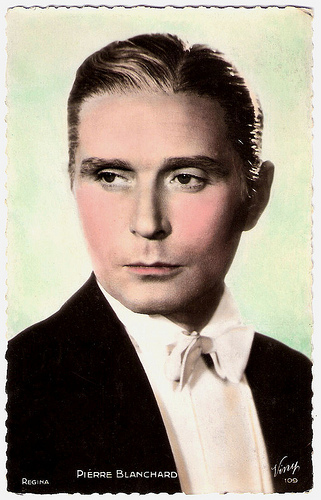
French postcard by Viny, no. 109. Photo: Regina.
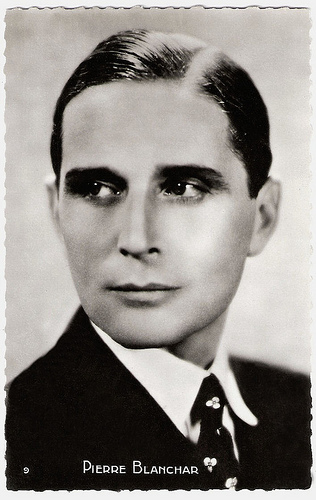
French postcard by Editions P.I., Paris, no. 9.
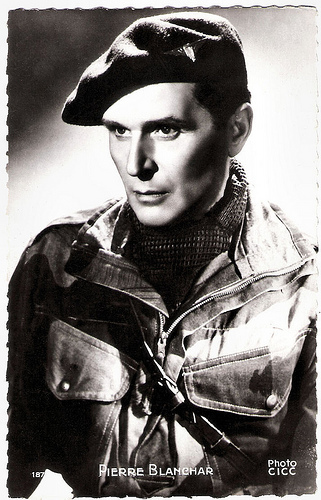
French postcard by Editions P.I., Paris, no. 187. Collection Les Carbones Korès 'Carboplane'. Photo: CICC. Pierre Blanchar in Bataillon du ciel/They Are Not Angels (Alexander Esway, 1947).
Papa Goodheart
Gustave Pierre Blanchard was born in Philippeville, Algeria (now Skikda, Algeria) in 1892.
He learned his craft at the Paris Conservatory, and made the first of many memorable stage appearances in 1919 (some sources say 1920). In 1922 he made his film début in the silent film Jocelyn (Léon Poirier, 1922).
Many leading roles followed in such silent films as Papa bon cœur/Papa Goodheart (Henry Krauss, 1922), Geneviève (Léon Poirier, 1923), Aux jardins de Murcie/Heritage (René Hervil, Louis Mercanton, 1923), La Terre promise/Promised Land (Henry Roussel, 1925) with Raquel Meller , Le Joueur d'échecs/The Chess Player (Raymond Bernard, 1927), and Le Capitaine Fracasse/Captain Fracasse (Alberto Cavalcanti, Henry Wulschleger, 1929) with the young Charles Boyer .
He also appeared in the German production Diane - Die geschichte einer Pariserin/Diane, the Story of a Paris Woman (Erich Waschneck, 1929) starring Olga Tschechova .
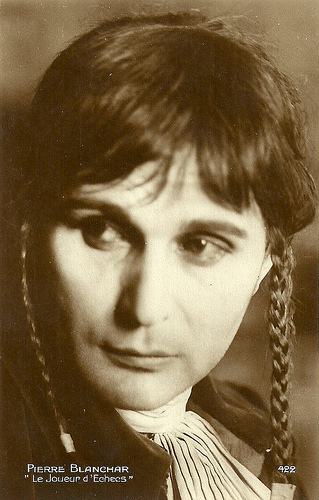
French postcard, no. 422. Photo: publicity still for Le joueur d'échecs (1927).
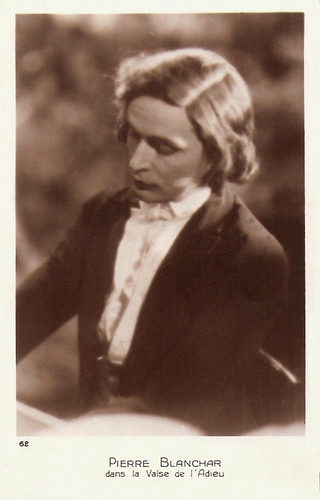
French postcard by Edition Cinemagazine, Paris, no. 62. Photo: Publicity still for La Valse de l'Adieu (Henry Roussel, 1928), a biographical film on the life of composer and pianist Frederic Chopin.
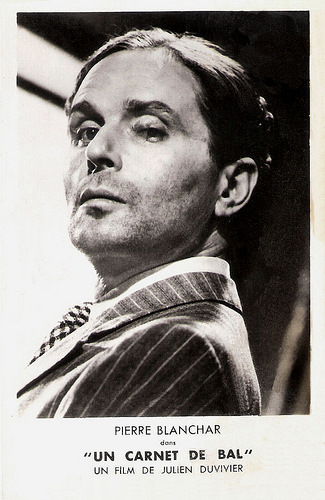
French postcard by Edition Chantal, Paris. Photo: publicity still for Un Carnet de Bal/Dance Program (Julien Duvivier, 1937).
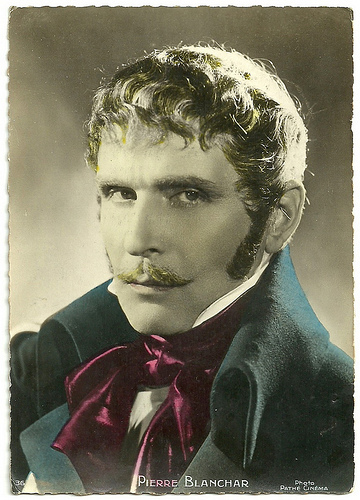
French postcard by Editions P.I., Paris, no. 36. Photo: Pathé Cinéma, Pierre Blanchar in Pontcarral, colonel d'empire/Pontcarral, colonel of the empire (Jean Delannoy, 1942).
Napoleon
Pierre Blanchar often chose to play characters which were complex and tortured, like Adjudant Gilbert Demachy in the war drama Les Croix de bois/The Wooden Crosses (Raymond Bernard, 1932) or Captain de Saint-Avit in the classic L'Atlantide (Georg Wilhelm Pabst, 1932) opposite Brigitte Helm .
At the film festival of Venice he was awarded the Volpi Cup as Best Actor for his role as Raskolnikov in Crime et châtiment/Crime and Punishment (Pierre Chenal, 1935).
Pierre Blanchar was the archetypical romantic and gloomy hero, but he did not neglect comedies, like Amants et voleurs/Lovers and Thieves (Raymond Bernard, 1935) with Arletty and Michel Simon , and Le Coupable/The Culprit (Raymond Bernard, 1937) with Madeleine Ozeray .
Other classic films of the 1930s were L’homme de nulle part/The Late Mathias Pascal (Pierre Chanal, 1937) with Isa Miranda , Mademoiselle Docteur (Georg Wilhelm Pabst, 1937) with Dita Parlo, Un carnet de bal/Dance Program (Julien Duvivier, 1937) with Marie Bell .
In 1937 he appeared also in the Alexander Pushkin adaptation La Dame de pique/Queen of Spades (1937, Fyodor Otsep), L'Affaire du courrier de Lyon (Claude Autant-Lara, Maurice Lehmann, 1937), L'Homme de nulle part/Courier of Lyons (Pierre Chenal, 1937) with Dita Parlo , and L'Étrange Monsieur Victor/Strange M. Victor (Jean Grémillon, 1938) starring Raimu .
One of Blanchar's most famous screen characterizations was Napoleon in the British A Royal Divorce (Jack Raymond, 1938) with Ruth Chatterton as Josephine de Beauharnais.
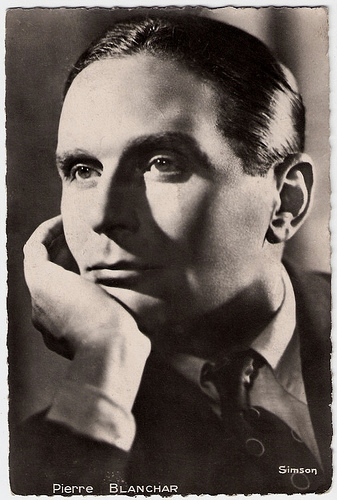
French postcard by Editions Chantal, Rueil-Malmaison. Photo: Simson.
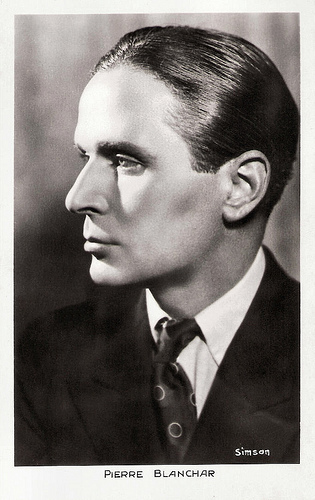
French postcard. Photo: Simson.
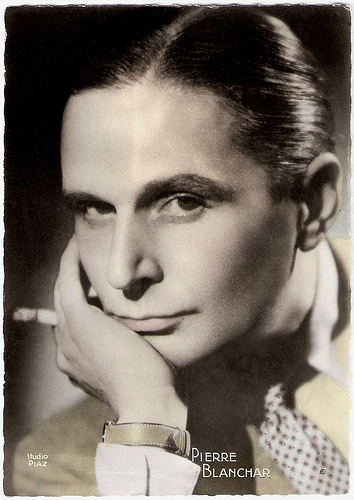
French postcard by Editions O.P., Paris, no. 17. Photo: Studio Piaz.
Resistance
Before and during the Second World War, Pierre Blanchar was often requested for French-German productions by Union France-Allemagne. During the occupation of France he starred in L'Empreinte du Dieu/Two Women (Léonide Moguy, 1940), the never completed La Prière aux étoiles/The Prayer to the Stars (Marcel Pagnol, 1941), and Pontcarral, colonel d'empire/Piontcarral, Colonel of the Empire (Jean Delannoy, 1942).
He also directed two films, Secrets (1942) and Un seul amour/One Love (1943) with Micheline Presle and Gaby André .
Later he became a member of the resistance and in August 1944 he commented vibrantly the images of the liberation of Paris in the cinema newsreels.
After the war he was highly praised for his touching performance in La Symphonie pastorale (Jean Delannoy, 1946) as a minister who falls in love with a blind girl ( Michèle Morgan ).
This success soon was followed by roles in Patrie/Homeland (Louis Daquin, 1946), and Après l'amour/After the Love (Maurice Tourneur, 1948).
Another special role was Captain Ferane in the film Le Bataillon du ciel/They Are Not Angels (Alexander Esway, 1947), based on the novel by Joseph Kessel. This role was inspired on the life and death of Pierre Marienne (1908-1944), one of the forces behind the liberation of France. As Lieutenant Paratrooper of the fourth bataillon of the Spécial Air Service (S.A.S.) of the Free French Forces he was parachuted in Bretagne on 5 June 1944 in the frame of D-Day. After taking part in the battle of Saint Marcel on 18 June 1944, he was assassinated in the Morhiban by the French army on 12 July 1944. Blanchar had known Pierre Marienne who had worked in the pre-war cinema. He also physically resembled Marienne.
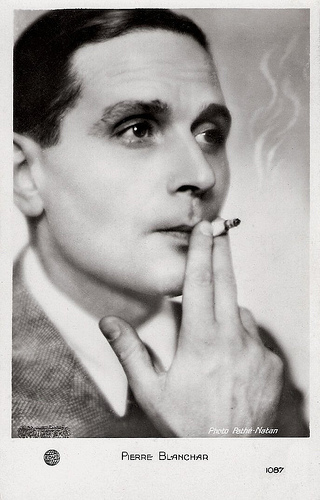
French postcard by E.D.U.G., no. 1087. Photo: Pathé / Natan.
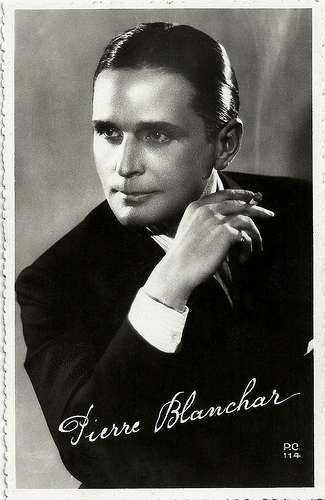
French postcard, no. 114. Photo: P.C.
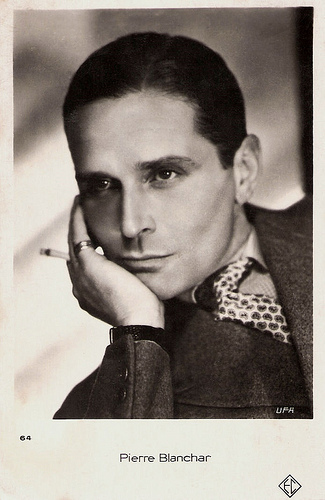
French postcard by EC, no. 64. Photo: Ufa.
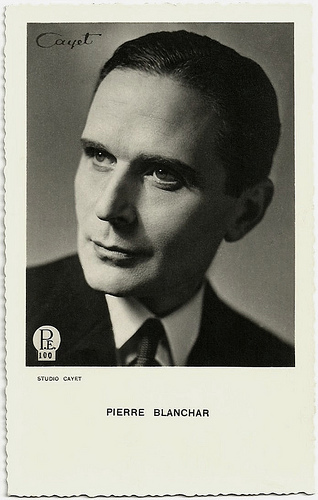
Belgian postcard by Photo Edition, Brussels, no. 100. Photo: Studio Cayet. Jo Cayet (1907-1987) was a famous Brussels based photographer.
Long Interval
Pierre Blanchar’s film career slowed down in the 1950s. After the title role of the comedy Mon ami Sainfoin/My Friend Sainfoin (Marc-Gilbert Sauvajon, 1950) there was a long interval till 1959.
That year he played supporting roles in Du rififi chez les femmes/Rififi and the Women (Alex Joffé, 1959) with Nadja Tiller , and the fairytale Katia/Magnificent Sinner (Robert Siodmak, 1959) with Romy Schneider .
His last film, Le Monocle noir/The Black Monocle (Georges Lautner, 1961), was shot at the château de Josselin in the Morbihan.
Pierre Blanchar died of a brain tumor in 1963, in Suresnes, France. He was married to Marte Vinot. They had a daughter actress Dominique Blanchar.
Scene from Le Joueur d'échecs/The Chess Player (1927) with Pierre Blanchar and Edith Jehanne . Source: Skazibus (YouTube).
La symphonie pastorale 1 6, by Jean, Delannoy. door jhhvideoteach
First scenes of La Symphonie pastorale (1946). Source: jhhvideoteach (Daily Motion).
Sources: Hal Erickson (AllMovie), Wikipedia (French), and .

French postcard by Viny, no. 109. Photo: Regina.

French postcard by Editions P.I., Paris, no. 9.

French postcard by Editions P.I., Paris, no. 187. Collection Les Carbones Korès 'Carboplane'. Photo: CICC. Pierre Blanchar in Bataillon du ciel/They Are Not Angels (Alexander Esway, 1947).
Papa Goodheart
Gustave Pierre Blanchard was born in Philippeville, Algeria (now Skikda, Algeria) in 1892.
He learned his craft at the Paris Conservatory, and made the first of many memorable stage appearances in 1919 (some sources say 1920). In 1922 he made his film début in the silent film Jocelyn (Léon Poirier, 1922).
Many leading roles followed in such silent films as Papa bon cœur/Papa Goodheart (Henry Krauss, 1922), Geneviève (Léon Poirier, 1923), Aux jardins de Murcie/Heritage (René Hervil, Louis Mercanton, 1923), La Terre promise/Promised Land (Henry Roussel, 1925) with Raquel Meller , Le Joueur d'échecs/The Chess Player (Raymond Bernard, 1927), and Le Capitaine Fracasse/Captain Fracasse (Alberto Cavalcanti, Henry Wulschleger, 1929) with the young Charles Boyer .
He also appeared in the German production Diane - Die geschichte einer Pariserin/Diane, the Story of a Paris Woman (Erich Waschneck, 1929) starring Olga Tschechova .

French postcard, no. 422. Photo: publicity still for Le joueur d'échecs (1927).

French postcard by Edition Cinemagazine, Paris, no. 62. Photo: Publicity still for La Valse de l'Adieu (Henry Roussel, 1928), a biographical film on the life of composer and pianist Frederic Chopin.

French postcard by Edition Chantal, Paris. Photo: publicity still for Un Carnet de Bal/Dance Program (Julien Duvivier, 1937).

French postcard by Editions P.I., Paris, no. 36. Photo: Pathé Cinéma, Pierre Blanchar in Pontcarral, colonel d'empire/Pontcarral, colonel of the empire (Jean Delannoy, 1942).
Napoleon
Pierre Blanchar often chose to play characters which were complex and tortured, like Adjudant Gilbert Demachy in the war drama Les Croix de bois/The Wooden Crosses (Raymond Bernard, 1932) or Captain de Saint-Avit in the classic L'Atlantide (Georg Wilhelm Pabst, 1932) opposite Brigitte Helm .
At the film festival of Venice he was awarded the Volpi Cup as Best Actor for his role as Raskolnikov in Crime et châtiment/Crime and Punishment (Pierre Chenal, 1935).
Pierre Blanchar was the archetypical romantic and gloomy hero, but he did not neglect comedies, like Amants et voleurs/Lovers and Thieves (Raymond Bernard, 1935) with Arletty and Michel Simon , and Le Coupable/The Culprit (Raymond Bernard, 1937) with Madeleine Ozeray .
Other classic films of the 1930s were L’homme de nulle part/The Late Mathias Pascal (Pierre Chanal, 1937) with Isa Miranda , Mademoiselle Docteur (Georg Wilhelm Pabst, 1937) with Dita Parlo, Un carnet de bal/Dance Program (Julien Duvivier, 1937) with Marie Bell .
In 1937 he appeared also in the Alexander Pushkin adaptation La Dame de pique/Queen of Spades (1937, Fyodor Otsep), L'Affaire du courrier de Lyon (Claude Autant-Lara, Maurice Lehmann, 1937), L'Homme de nulle part/Courier of Lyons (Pierre Chenal, 1937) with Dita Parlo , and L'Étrange Monsieur Victor/Strange M. Victor (Jean Grémillon, 1938) starring Raimu .
One of Blanchar's most famous screen characterizations was Napoleon in the British A Royal Divorce (Jack Raymond, 1938) with Ruth Chatterton as Josephine de Beauharnais.

French postcard by Editions Chantal, Rueil-Malmaison. Photo: Simson.

French postcard. Photo: Simson.

French postcard by Editions O.P., Paris, no. 17. Photo: Studio Piaz.
Resistance
Before and during the Second World War, Pierre Blanchar was often requested for French-German productions by Union France-Allemagne. During the occupation of France he starred in L'Empreinte du Dieu/Two Women (Léonide Moguy, 1940), the never completed La Prière aux étoiles/The Prayer to the Stars (Marcel Pagnol, 1941), and Pontcarral, colonel d'empire/Piontcarral, Colonel of the Empire (Jean Delannoy, 1942).
He also directed two films, Secrets (1942) and Un seul amour/One Love (1943) with Micheline Presle and Gaby André .
Later he became a member of the resistance and in August 1944 he commented vibrantly the images of the liberation of Paris in the cinema newsreels.
After the war he was highly praised for his touching performance in La Symphonie pastorale (Jean Delannoy, 1946) as a minister who falls in love with a blind girl ( Michèle Morgan ).
This success soon was followed by roles in Patrie/Homeland (Louis Daquin, 1946), and Après l'amour/After the Love (Maurice Tourneur, 1948).
Another special role was Captain Ferane in the film Le Bataillon du ciel/They Are Not Angels (Alexander Esway, 1947), based on the novel by Joseph Kessel. This role was inspired on the life and death of Pierre Marienne (1908-1944), one of the forces behind the liberation of France. As Lieutenant Paratrooper of the fourth bataillon of the Spécial Air Service (S.A.S.) of the Free French Forces he was parachuted in Bretagne on 5 June 1944 in the frame of D-Day. After taking part in the battle of Saint Marcel on 18 June 1944, he was assassinated in the Morhiban by the French army on 12 July 1944. Blanchar had known Pierre Marienne who had worked in the pre-war cinema. He also physically resembled Marienne.

French postcard by E.D.U.G., no. 1087. Photo: Pathé / Natan.

French postcard, no. 114. Photo: P.C.

French postcard by EC, no. 64. Photo: Ufa.

Belgian postcard by Photo Edition, Brussels, no. 100. Photo: Studio Cayet. Jo Cayet (1907-1987) was a famous Brussels based photographer.
Long Interval
Pierre Blanchar’s film career slowed down in the 1950s. After the title role of the comedy Mon ami Sainfoin/My Friend Sainfoin (Marc-Gilbert Sauvajon, 1950) there was a long interval till 1959.
That year he played supporting roles in Du rififi chez les femmes/Rififi and the Women (Alex Joffé, 1959) with Nadja Tiller , and the fairytale Katia/Magnificent Sinner (Robert Siodmak, 1959) with Romy Schneider .
His last film, Le Monocle noir/The Black Monocle (Georges Lautner, 1961), was shot at the château de Josselin in the Morbihan.
Pierre Blanchar died of a brain tumor in 1963, in Suresnes, France. He was married to Marte Vinot. They had a daughter actress Dominique Blanchar.
Scene from Le Joueur d'échecs/The Chess Player (1927) with Pierre Blanchar and Edith Jehanne . Source: Skazibus (YouTube).
La symphonie pastorale 1 6, by Jean, Delannoy. door jhhvideoteach
First scenes of La Symphonie pastorale (1946). Source: jhhvideoteach (Daily Motion).
Sources: Hal Erickson (AllMovie), Wikipedia (French), and .
Published on December 26, 2016 22:00
December 25, 2016
Kim Rossi Stuart
Hunky Italian actor Kim Rossi Stuart (1969) started as a teen idol in B-films and TV movies. He turned his career in a more serious direction with arthouse hits like Michelangelo Antonioni’s Al di là delle nuvole and Romanzo Criminale/Crime Novel (2005). He also became a notable film director himself.
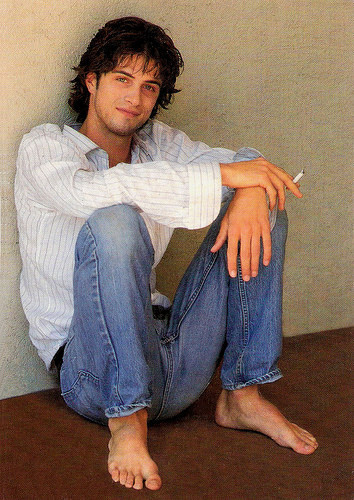
Italian postcard by World Collection, no. P.c. 466. Photo: A. Servello / G. Neri.
Karate Warrior
Kim Rossi Stuart was born in Rome in 1969 and named after the Rudyard Kipling novel Kim. His father, Giacomo Rossi Stuart, is an actor of Italian and Scottish descent. Kim's mother, Klara Müller, is a former top model of German and Dutch descent. Kim has three sisters, two of them actresses: Loretta Rossi Stuart and Valentina Rossi Stuart, the latter also stunt-woman. Ombretta is his third sister.
Kim began acting at the age of 5 with his father Giacomo in the film drama Fatti di gente perbene/The Murri Affair (Mauro Bolognini, 1974), starring Catherine Deneuve .
In 1983, the 14-years-old left his parents' home and also left school to further his career as an actor. He studied theatre and in 1986 he began to act regularly for TV and film. He played a novice in Der Name der Rose/The Name of the Rose (Jean-Jacques Annaud, 1986), the film version of Umberto Eco’s bestseller.
He became popular with his lead in the martial arts film Il ragazzo dal kimono d'oro/Karate Warrior (Fabrizio De Angelis, 1987) and its sequels. Seymour Asses at IMDb : “It's a poorly made 'young guy learns karate from old Asian master in order fight his arch nemesis over a girl' type movie. The plot is lifted from The Karate Kid 2, but Karate Warrior expands on this by adding magic to the mix. Really, really stupid magic.”
More interesting was the dark and funny comedy Lo zio indegno/The Sleazy Uncle (Franco Brusati, 1989), starring Vittorio Gassman . Rossi-Stuart was again a smash among young Italian audiences as a dashing prince in the TV movie Fantaghirò/Cave of the Golden Rose (Lamberto Bava, 1991) with Alessandra Martines as the title character. The success lead again to several sequels.
Teen idol Rossi Stuart now began to focus on quality films, like Senza pelle/No Skin (Alessandro D'Alatri, 1994), where his role, a man with psychological problems, was appreciated by the critics. A popular film was the crime-drama Poliziotti/Policemen (Giulio Base, 1995), with Claudio Amendola and Michele Placido. Then he acted for legendary director Michelangelo Antonioni in Al di là delle nuvole/Beyond the Clouds (Michelangelo Antonioni, Wim Wenders, 1995).
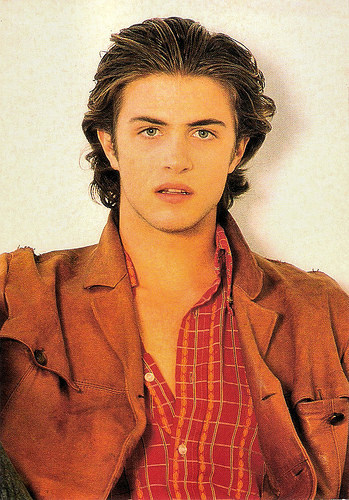
Italian postcard by World Collection, no. P.c. 472. Photo: A. Servello / G. Neri.

Italian postcard by TV Stelle in the Star Collection, no. 7. Design: C. Rea.
Angel of Evil
In the mid 1990s, Kim Rossi Stuart returned to the theatre to play in William Shakespeare’s Re Lear (King Lear), directed by Luca Ronconi, and he acted with Turi Ferro in Il visitatore (The Visitor) written by Eric-Emmanuel Schmitt and directed by Antonio Calenda.
On TV, he played Julien Sorel in the French-series Le Rouge et le Noir/The Red and the Black (Jean-Daniel Verhaeghe, 1997), based upon the famous novel by Stendhal.
In 2002 he participated in the film Pinocchio (Roberto Benigni, 2002) as Lucignolo. Then, he played in Le Chiavi di Casa/The Keys to the House (Gianni Amelio, 2004), as a young father who attempts to forge a relationship with his teenage, handicapped son after he meets him for the first time. The film and his performance won several awards.
Later he played Mimmo in the TV-film Il tunnel della libertà/The tunnel of the Freedom (Enzo Monteleone, 2004) and he had one of the leading-roles in Michele Placido's Romanzo Criminale/Kings of Crime (Michele Placido, 2005). This film was also highly acclaimed and won 15 awards.
Rossi Stuart wrote the screenplay, directed and acted in the film Anche libero va bene/Along the Ridge (Kim Rossi Stuart, 2006). It was followed by a lead role in Piano, solo (Riccardo Milani, 2007), a film based on the life of Italian jazz great Luca Flores, with Rossi Stuart playing Flores. He then starred in the comedy-drama Questione Di Cuore/A Question of the Heart (Francesca Archibugi, 2009).
Then followed Vallanzasca - Gli Angeli Del Male/Angel of Evil (Michele Placido, 2011), based on the life of Renato Vallanzasca, a famous 1970s Italian bank robber. Wallys Chamber at IMDb : “Kim Rossi Stuart has a lot of charm, mixed with a crazy brutality and a great face to slap on the front of a newspaper. There's a fantastic scene where Vallanzasca dresses as a business man and just strolls straight through into the bank's back room to help himself and it's only with this charm that he manages to go through with it.”
In the French romantic comedy L'ex de ma vie (Dorothée Sebbagh, 2014) he appeared as the Italian ex Nino of Géraldine Nakache. And he directed himself in the comedy-drama Tommaso (Kim Rossi Stuart, 2016).
Kim Rossi Stuart was in a relationship with the actresses Veronica Logan and and Simona Cavallari. He speaks English, French and Italian, is an accomplished swimmer and also plays the trumpet. He has a son Ettore (2011) with his girlfriend Ilaria Spada.
Trailer Romanzo Criminale/Kings of Crime (Michele Placido, 2005). Source: neondreams 25 (YouTube).
Italian trailer for Vallanzasca - Gli Angeli Del Male/Angel of Evil (Michele Placido, 2011). Source: 20th Century Fox Italia (YouTube).
Italian trailer for Tommaso (Kim Rossi Stuart, 2016). Source: 01Distribution (YouTube).
Sources: (IMDb), Wikipedia and .

Italian postcard by World Collection, no. P.c. 466. Photo: A. Servello / G. Neri.
Karate Warrior
Kim Rossi Stuart was born in Rome in 1969 and named after the Rudyard Kipling novel Kim. His father, Giacomo Rossi Stuart, is an actor of Italian and Scottish descent. Kim's mother, Klara Müller, is a former top model of German and Dutch descent. Kim has three sisters, two of them actresses: Loretta Rossi Stuart and Valentina Rossi Stuart, the latter also stunt-woman. Ombretta is his third sister.
Kim began acting at the age of 5 with his father Giacomo in the film drama Fatti di gente perbene/The Murri Affair (Mauro Bolognini, 1974), starring Catherine Deneuve .
In 1983, the 14-years-old left his parents' home and also left school to further his career as an actor. He studied theatre and in 1986 he began to act regularly for TV and film. He played a novice in Der Name der Rose/The Name of the Rose (Jean-Jacques Annaud, 1986), the film version of Umberto Eco’s bestseller.
He became popular with his lead in the martial arts film Il ragazzo dal kimono d'oro/Karate Warrior (Fabrizio De Angelis, 1987) and its sequels. Seymour Asses at IMDb : “It's a poorly made 'young guy learns karate from old Asian master in order fight his arch nemesis over a girl' type movie. The plot is lifted from The Karate Kid 2, but Karate Warrior expands on this by adding magic to the mix. Really, really stupid magic.”
More interesting was the dark and funny comedy Lo zio indegno/The Sleazy Uncle (Franco Brusati, 1989), starring Vittorio Gassman . Rossi-Stuart was again a smash among young Italian audiences as a dashing prince in the TV movie Fantaghirò/Cave of the Golden Rose (Lamberto Bava, 1991) with Alessandra Martines as the title character. The success lead again to several sequels.
Teen idol Rossi Stuart now began to focus on quality films, like Senza pelle/No Skin (Alessandro D'Alatri, 1994), where his role, a man with psychological problems, was appreciated by the critics. A popular film was the crime-drama Poliziotti/Policemen (Giulio Base, 1995), with Claudio Amendola and Michele Placido. Then he acted for legendary director Michelangelo Antonioni in Al di là delle nuvole/Beyond the Clouds (Michelangelo Antonioni, Wim Wenders, 1995).

Italian postcard by World Collection, no. P.c. 472. Photo: A. Servello / G. Neri.

Italian postcard by TV Stelle in the Star Collection, no. 7. Design: C. Rea.
Angel of Evil
In the mid 1990s, Kim Rossi Stuart returned to the theatre to play in William Shakespeare’s Re Lear (King Lear), directed by Luca Ronconi, and he acted with Turi Ferro in Il visitatore (The Visitor) written by Eric-Emmanuel Schmitt and directed by Antonio Calenda.
On TV, he played Julien Sorel in the French-series Le Rouge et le Noir/The Red and the Black (Jean-Daniel Verhaeghe, 1997), based upon the famous novel by Stendhal.
In 2002 he participated in the film Pinocchio (Roberto Benigni, 2002) as Lucignolo. Then, he played in Le Chiavi di Casa/The Keys to the House (Gianni Amelio, 2004), as a young father who attempts to forge a relationship with his teenage, handicapped son after he meets him for the first time. The film and his performance won several awards.
Later he played Mimmo in the TV-film Il tunnel della libertà/The tunnel of the Freedom (Enzo Monteleone, 2004) and he had one of the leading-roles in Michele Placido's Romanzo Criminale/Kings of Crime (Michele Placido, 2005). This film was also highly acclaimed and won 15 awards.
Rossi Stuart wrote the screenplay, directed and acted in the film Anche libero va bene/Along the Ridge (Kim Rossi Stuart, 2006). It was followed by a lead role in Piano, solo (Riccardo Milani, 2007), a film based on the life of Italian jazz great Luca Flores, with Rossi Stuart playing Flores. He then starred in the comedy-drama Questione Di Cuore/A Question of the Heart (Francesca Archibugi, 2009).
Then followed Vallanzasca - Gli Angeli Del Male/Angel of Evil (Michele Placido, 2011), based on the life of Renato Vallanzasca, a famous 1970s Italian bank robber. Wallys Chamber at IMDb : “Kim Rossi Stuart has a lot of charm, mixed with a crazy brutality and a great face to slap on the front of a newspaper. There's a fantastic scene where Vallanzasca dresses as a business man and just strolls straight through into the bank's back room to help himself and it's only with this charm that he manages to go through with it.”
In the French romantic comedy L'ex de ma vie (Dorothée Sebbagh, 2014) he appeared as the Italian ex Nino of Géraldine Nakache. And he directed himself in the comedy-drama Tommaso (Kim Rossi Stuart, 2016).
Kim Rossi Stuart was in a relationship with the actresses Veronica Logan and and Simona Cavallari. He speaks English, French and Italian, is an accomplished swimmer and also plays the trumpet. He has a son Ettore (2011) with his girlfriend Ilaria Spada.
Trailer Romanzo Criminale/Kings of Crime (Michele Placido, 2005). Source: neondreams 25 (YouTube).
Italian trailer for Vallanzasca - Gli Angeli Del Male/Angel of Evil (Michele Placido, 2011). Source: 20th Century Fox Italia (YouTube).
Italian trailer for Tommaso (Kim Rossi Stuart, 2016). Source: 01Distribution (YouTube).
Sources: (IMDb), Wikipedia and .
Published on December 25, 2016 22:00
Paul van Yperen's Blog
- Paul van Yperen's profile
- 13 followers
Paul van Yperen isn't a Goodreads Author
(yet),
but they
do have a blog,
so here are some recent posts imported from
their feed.



